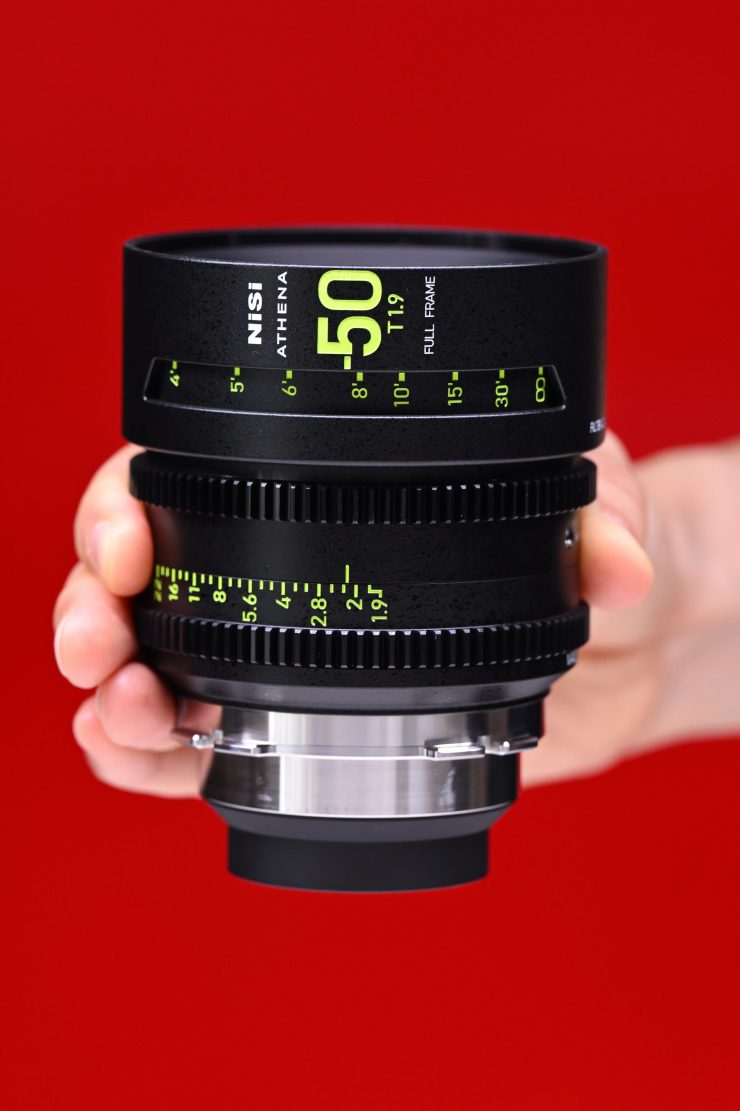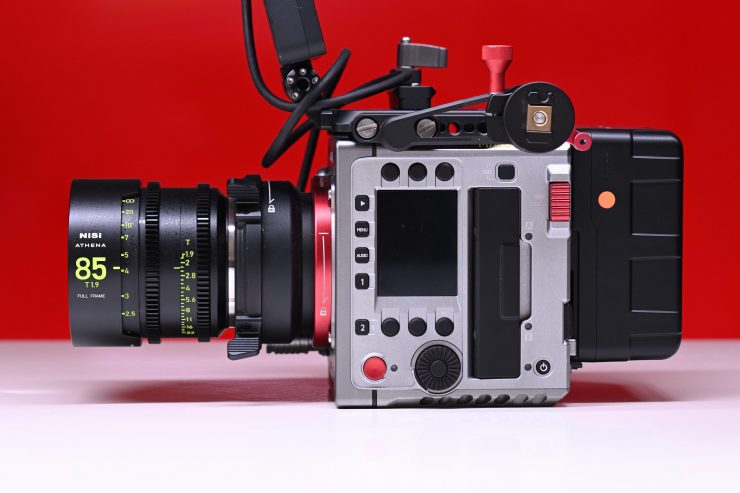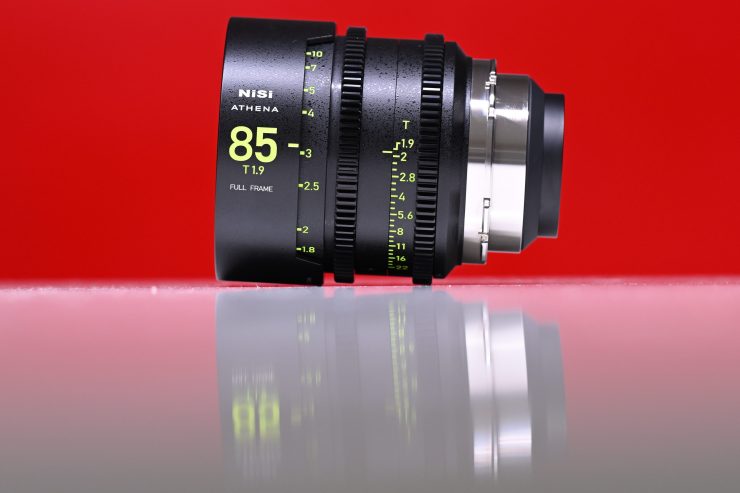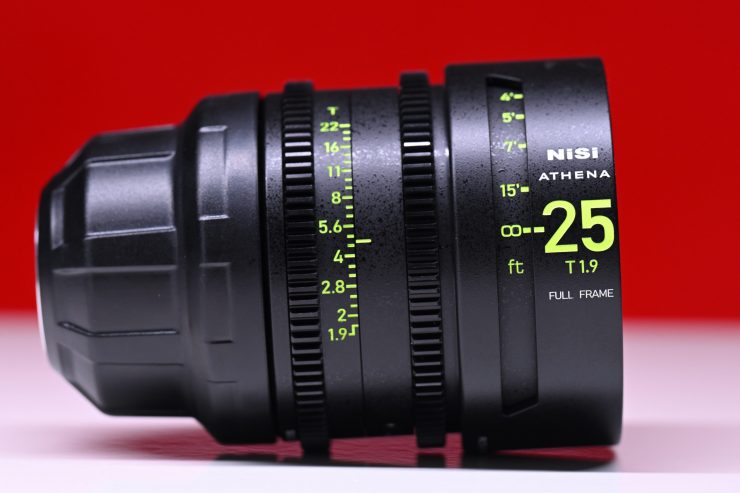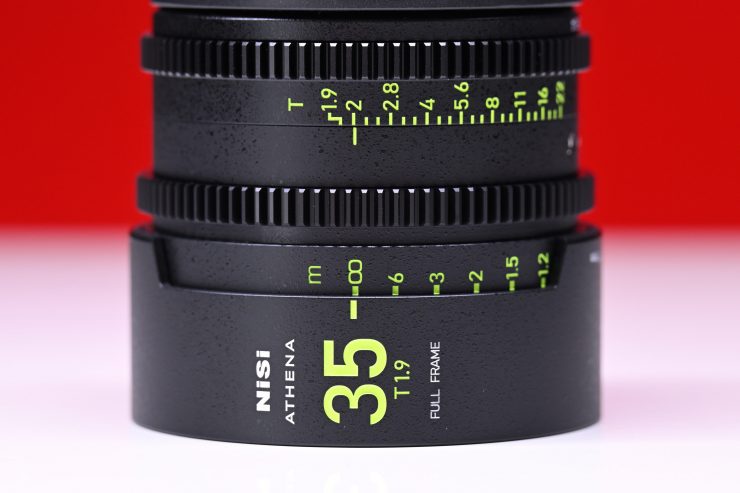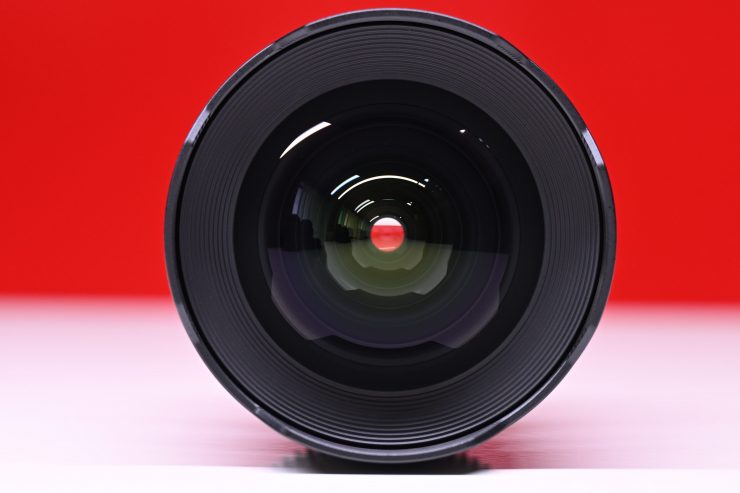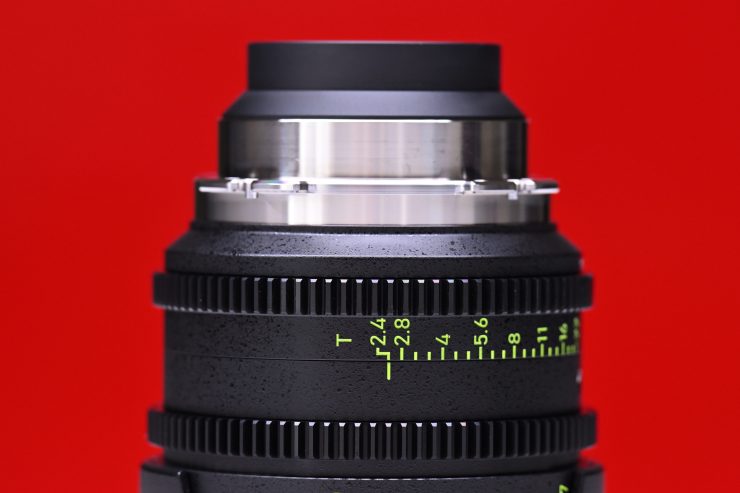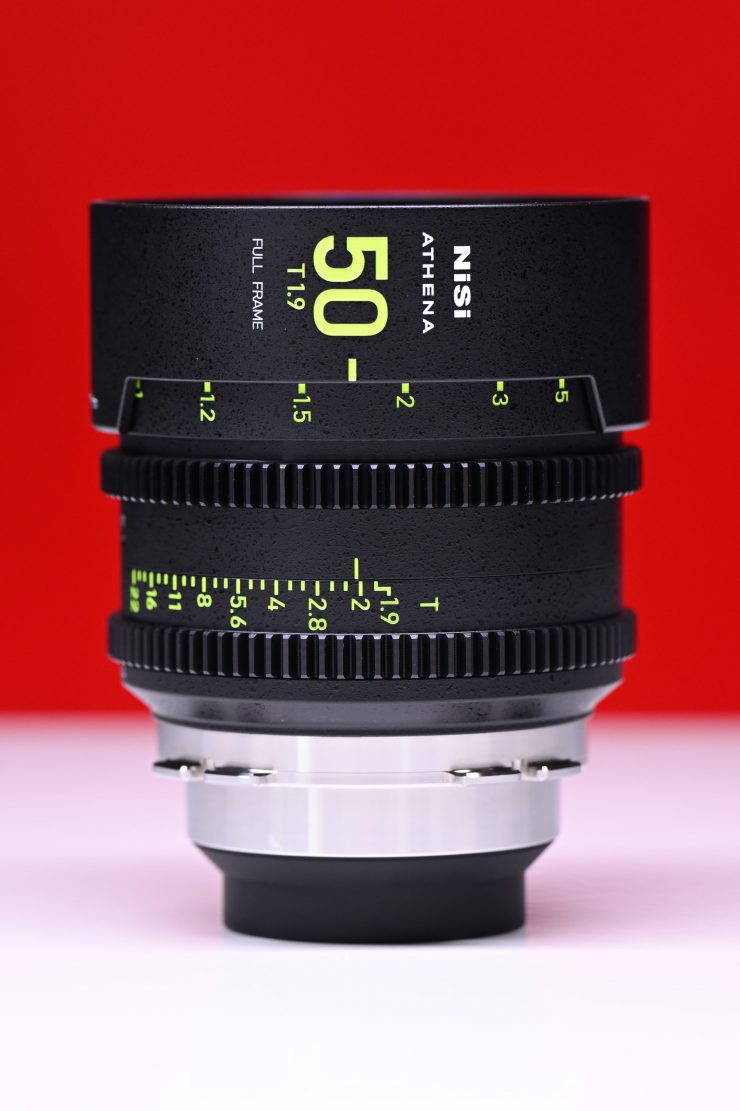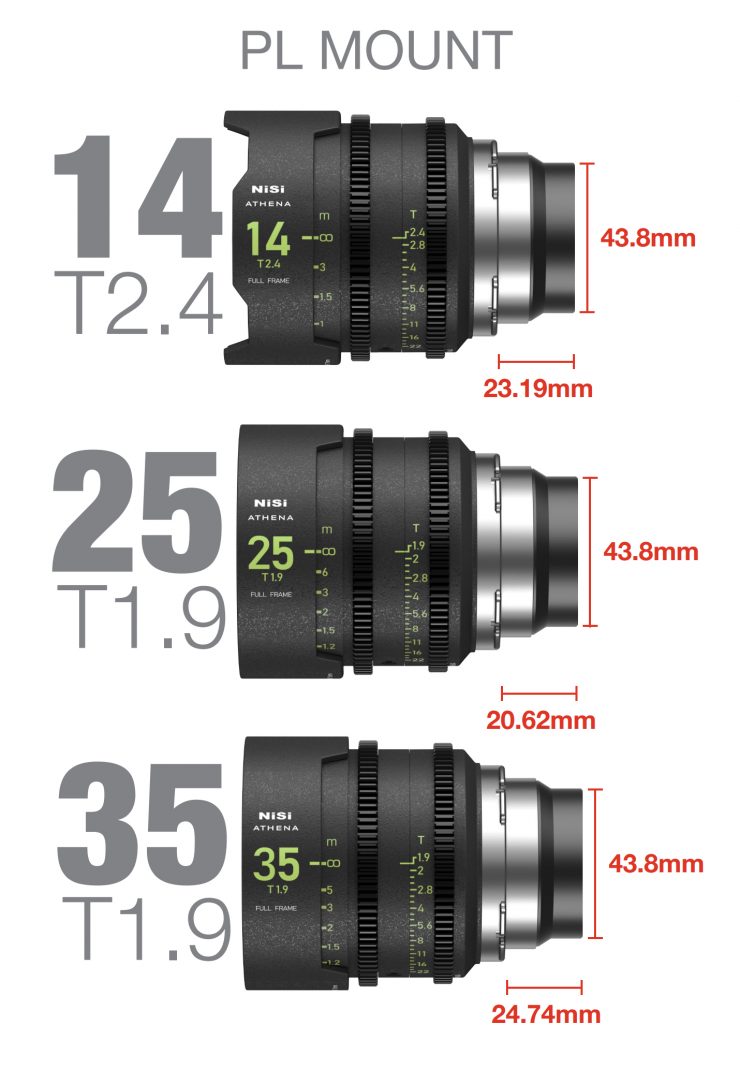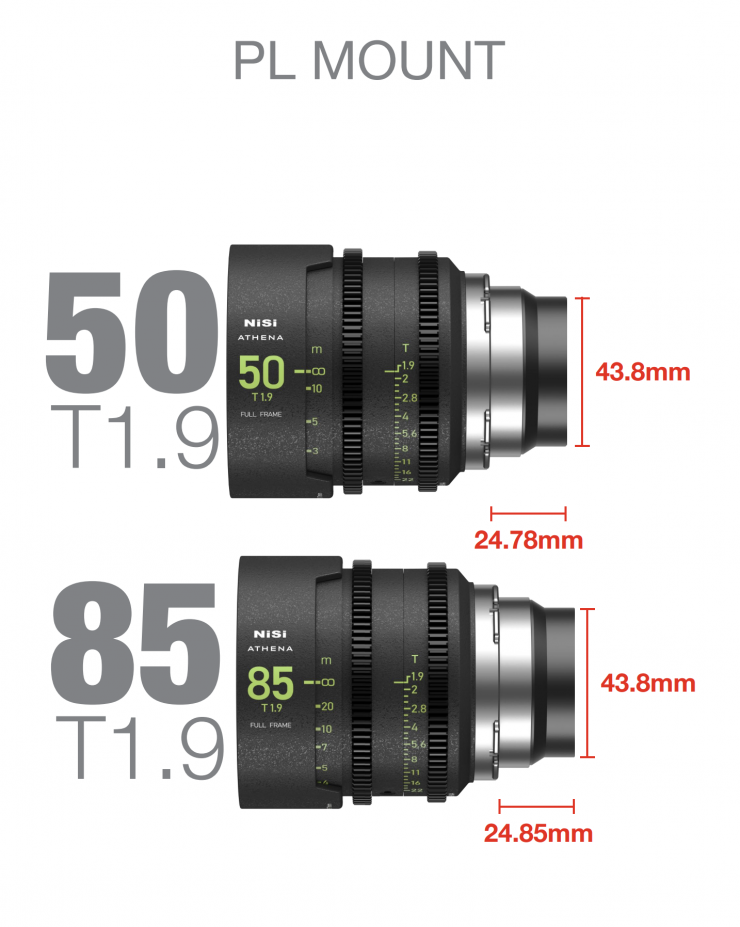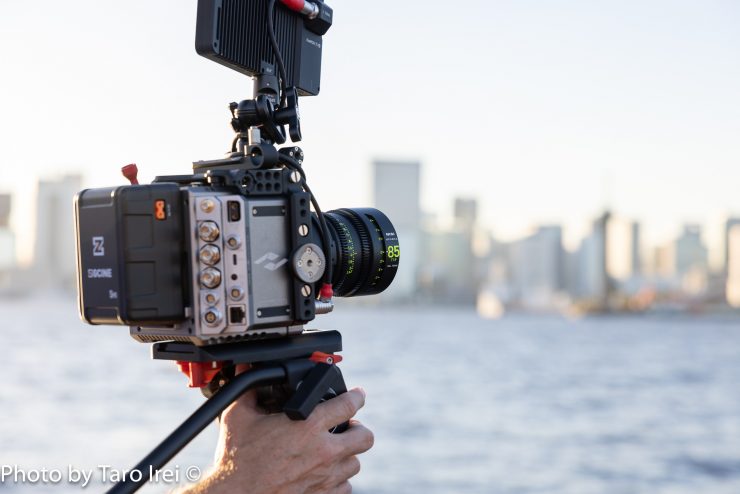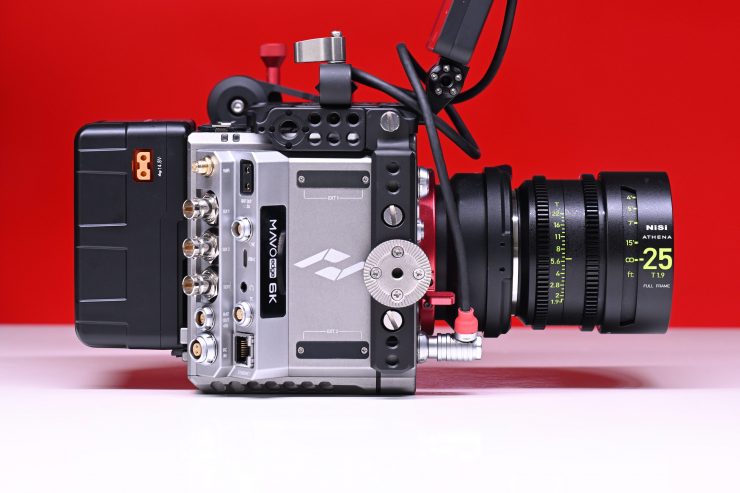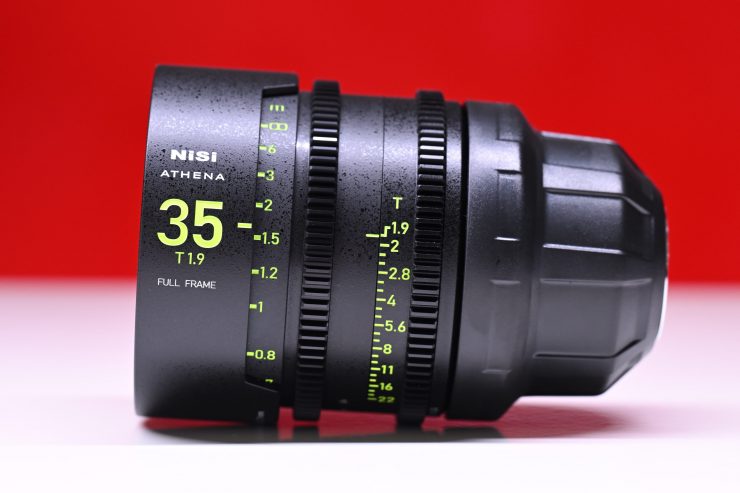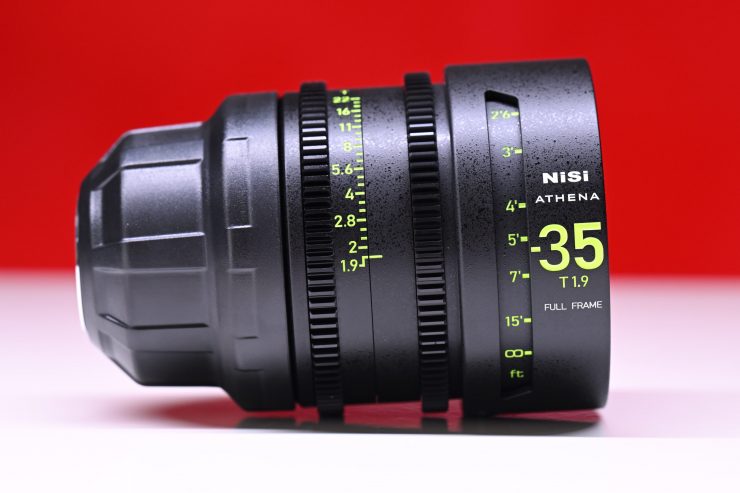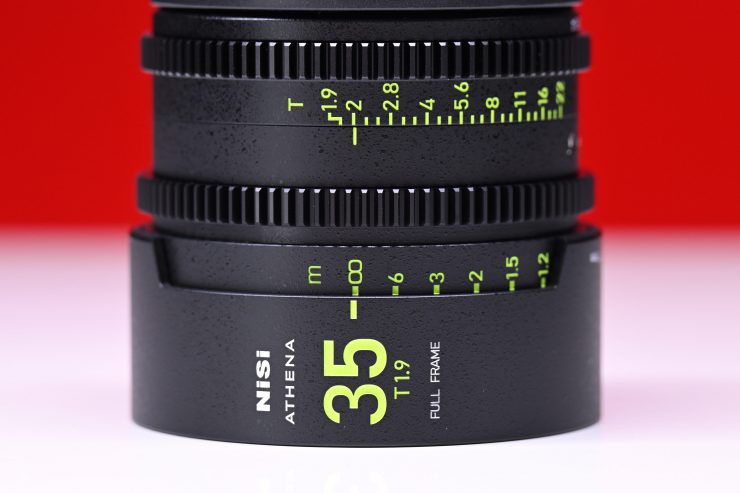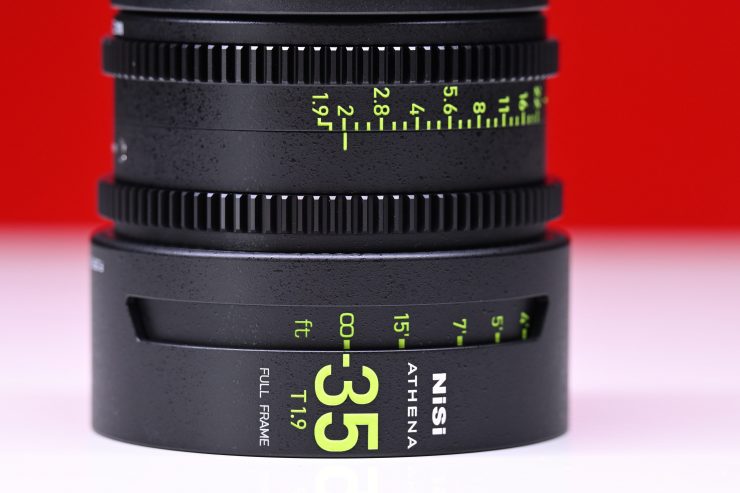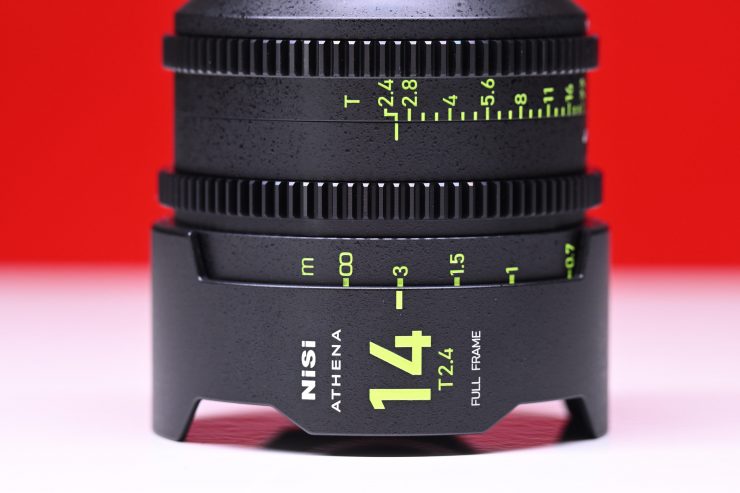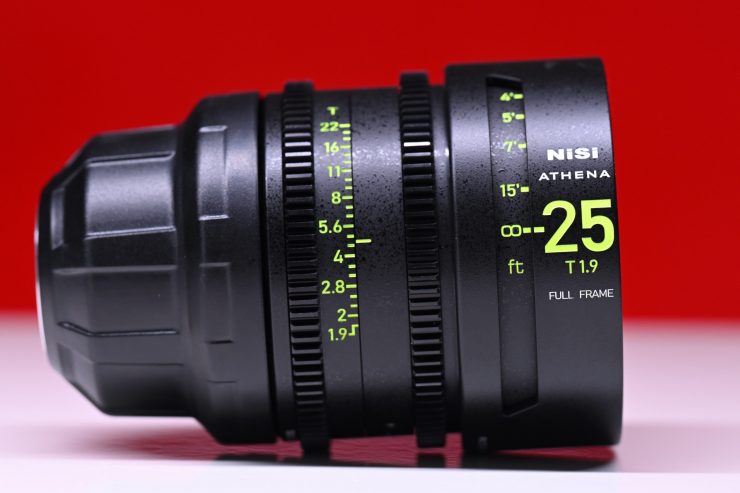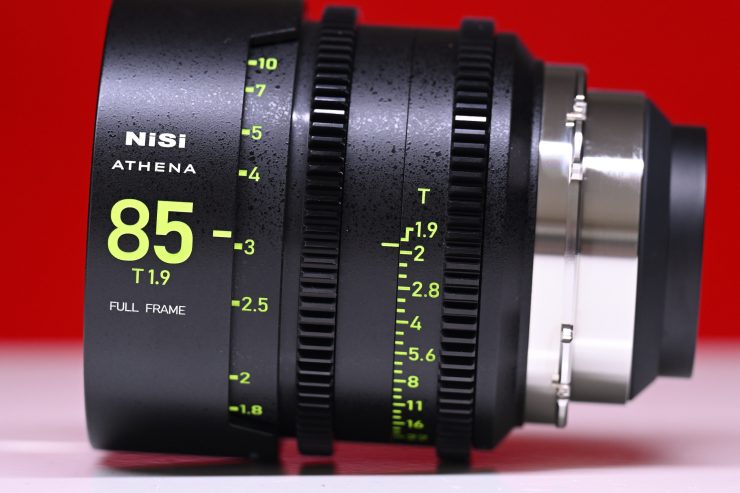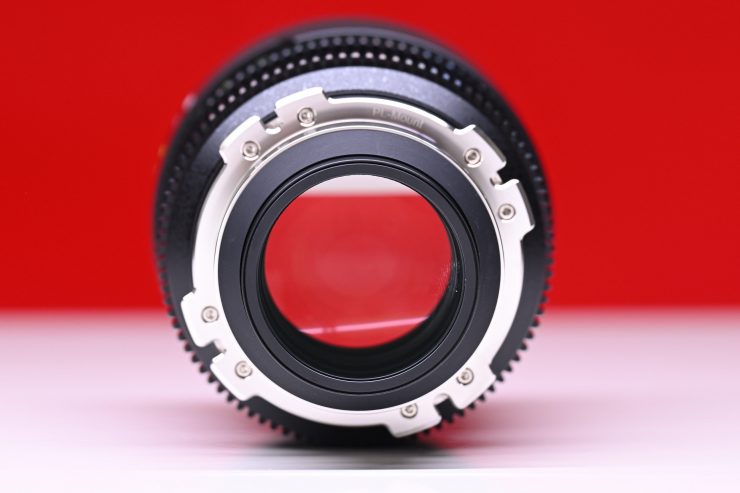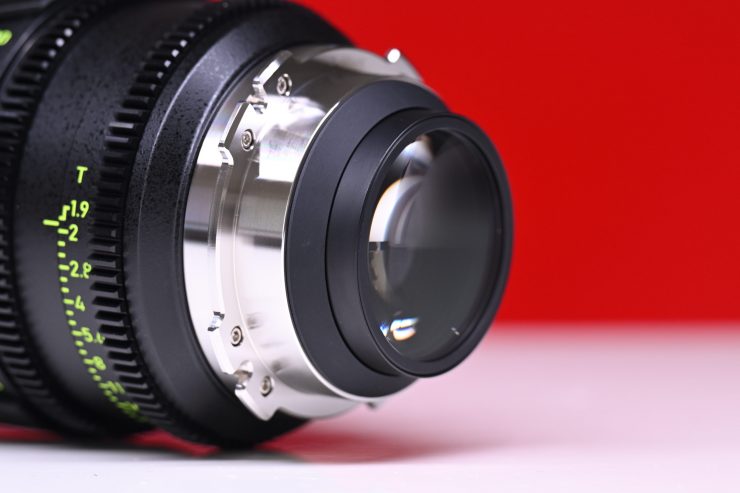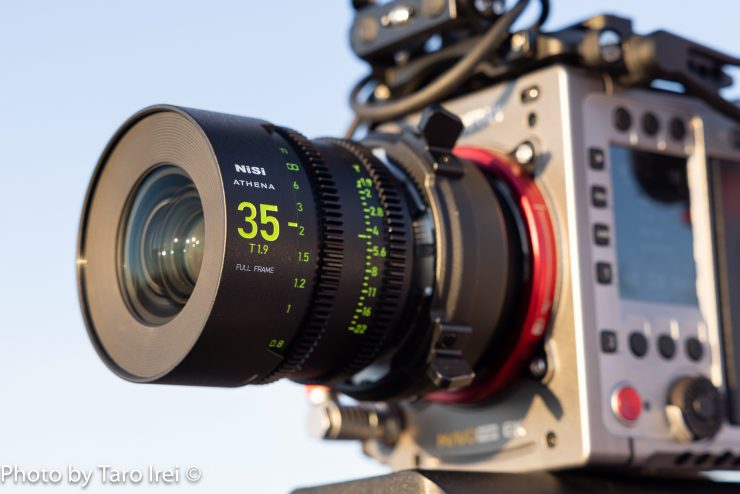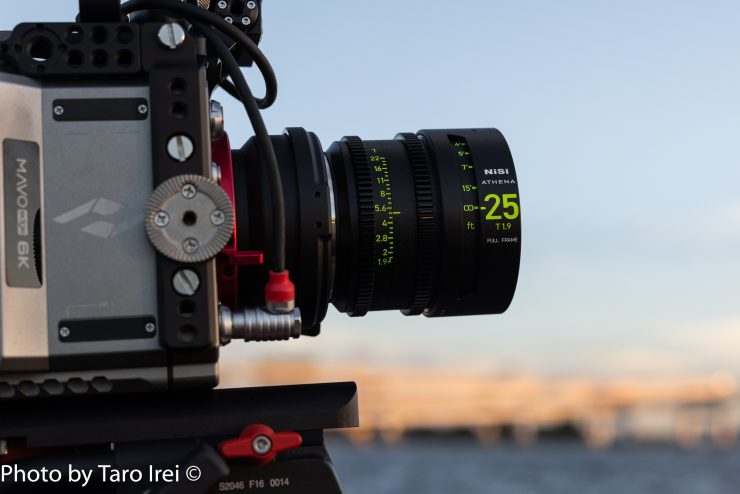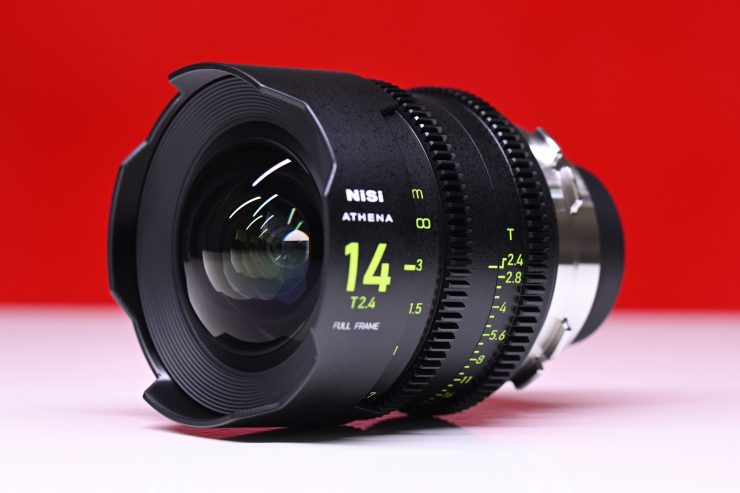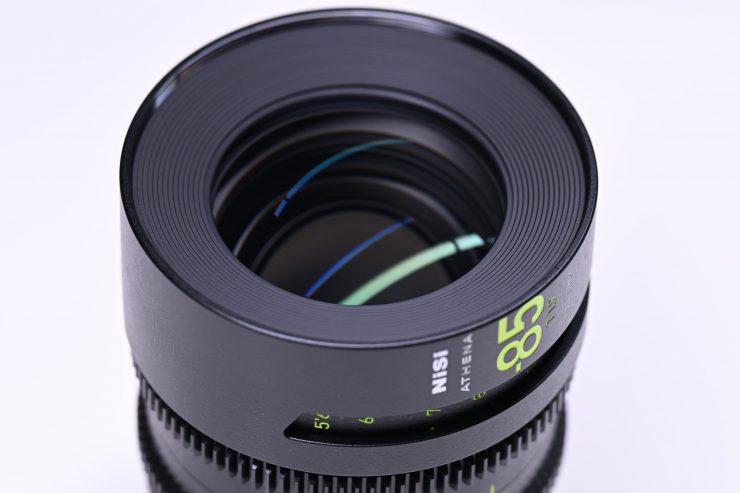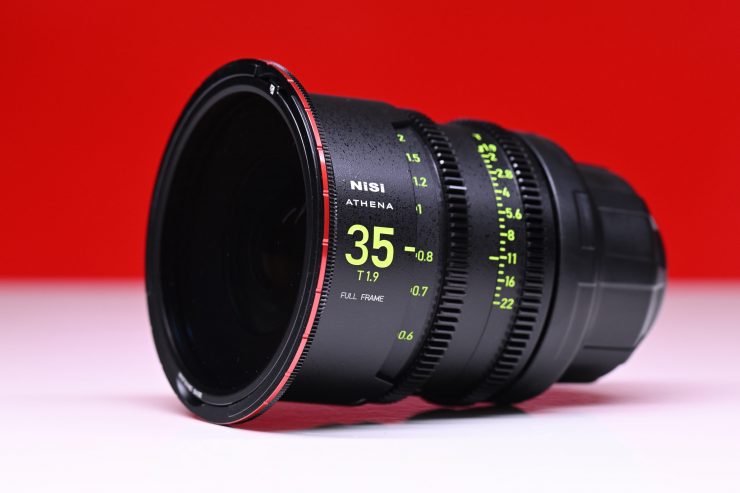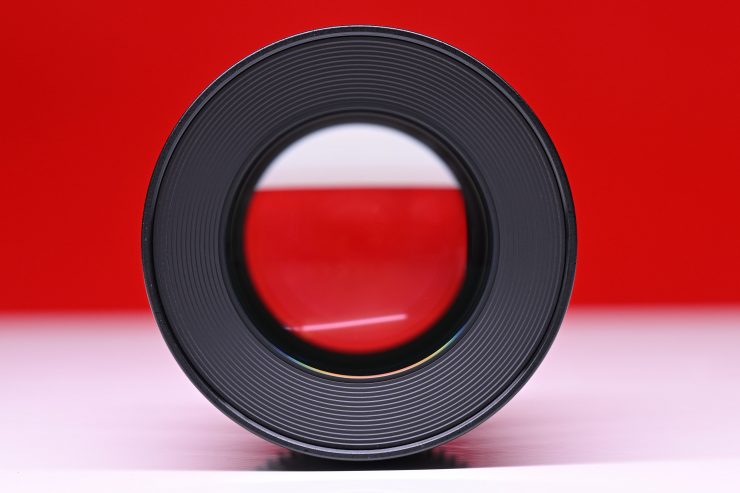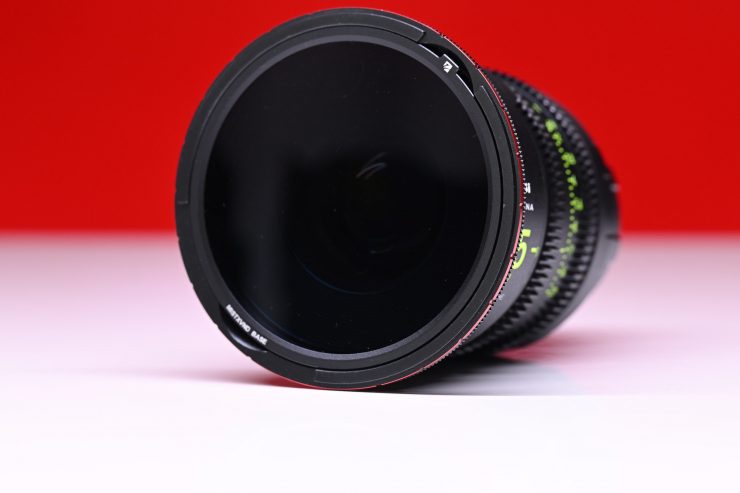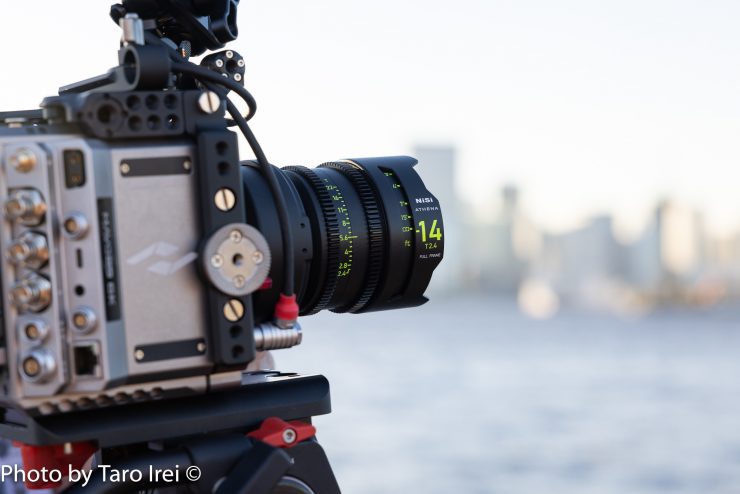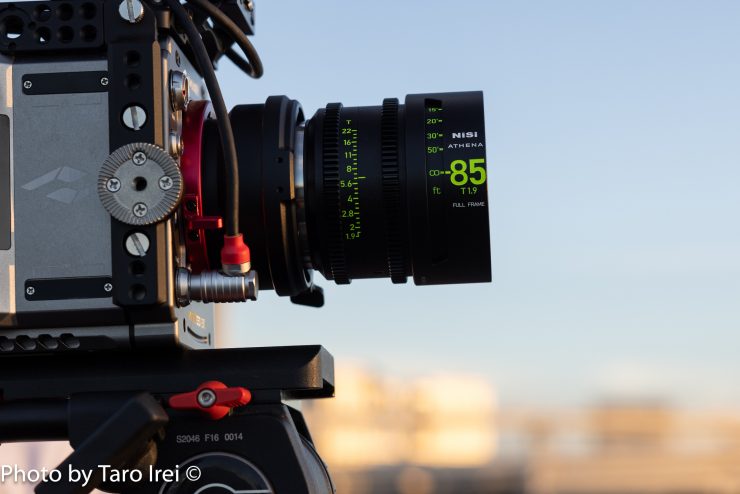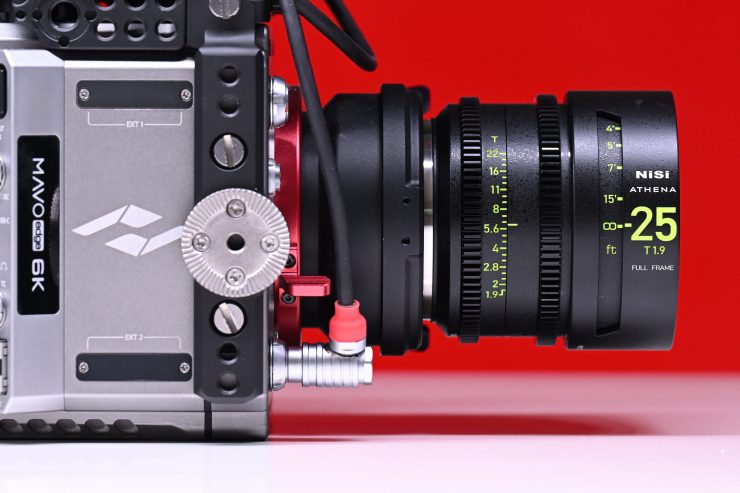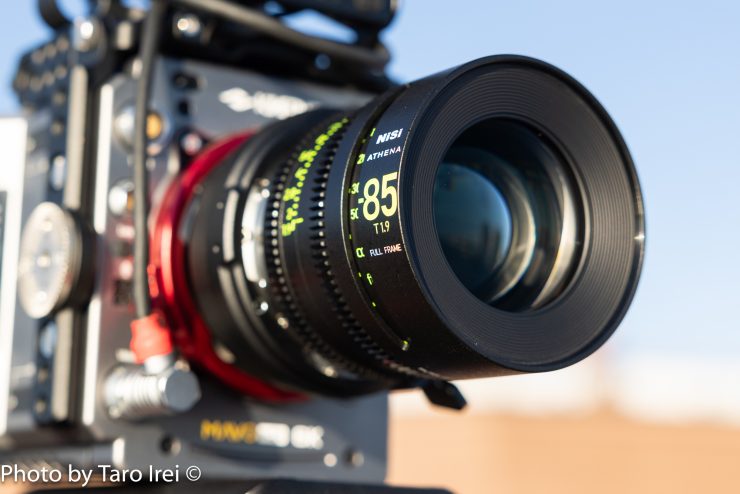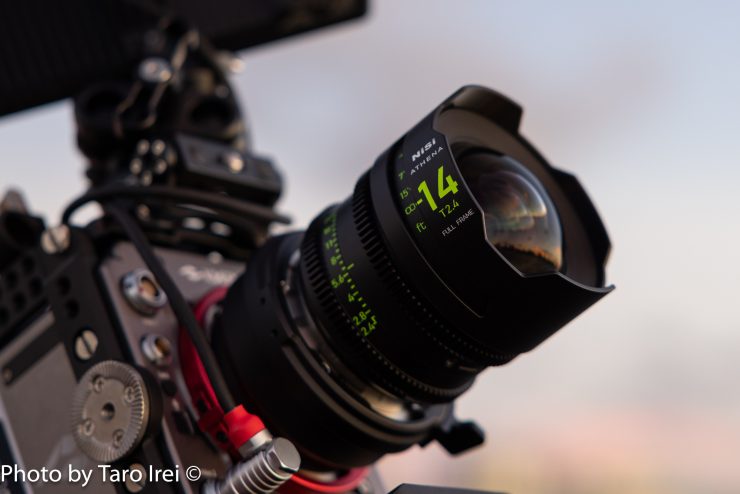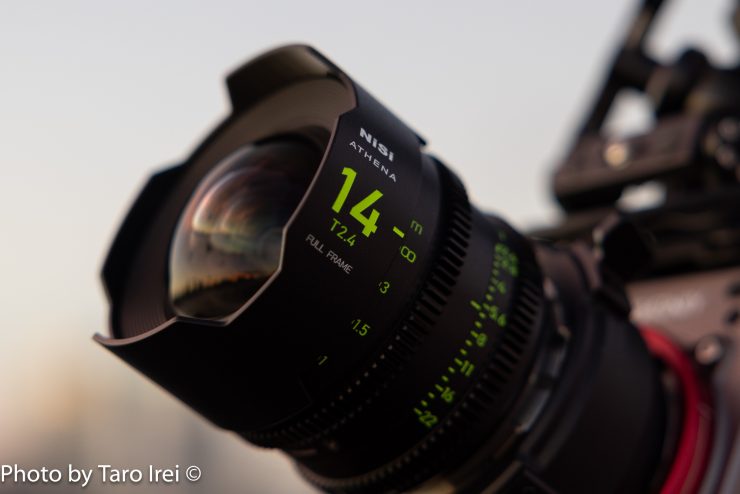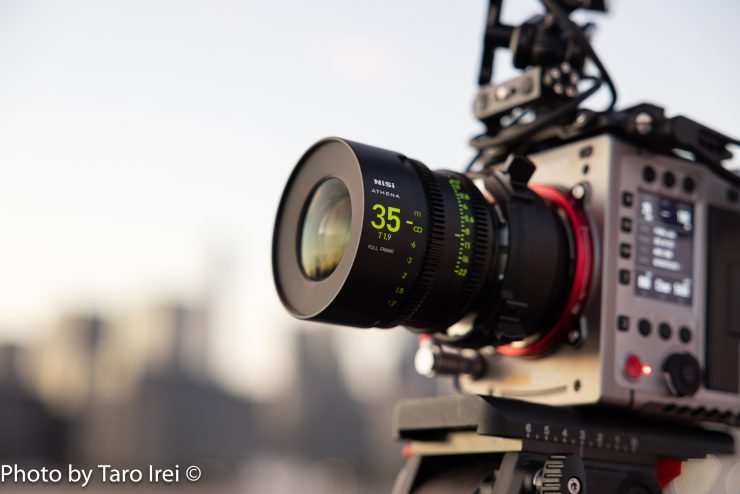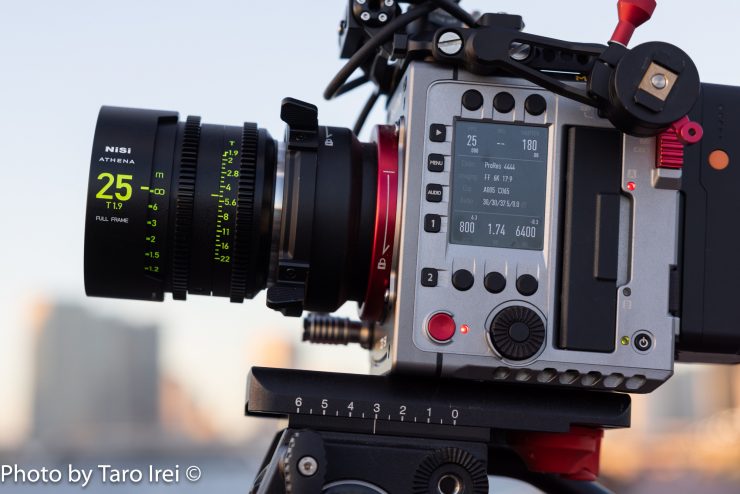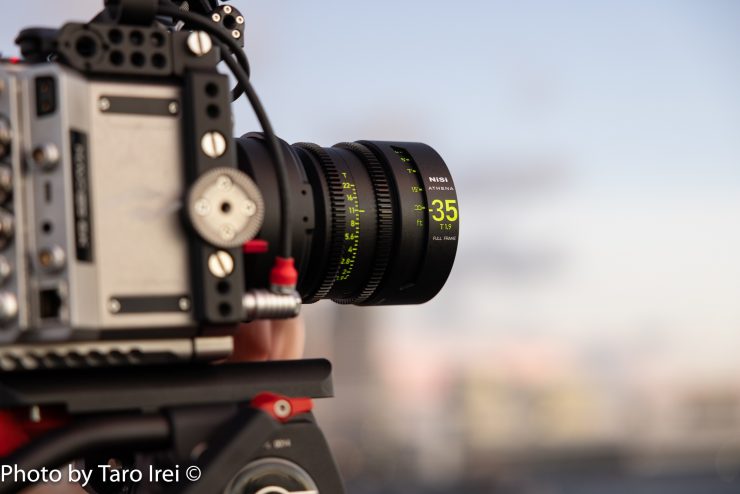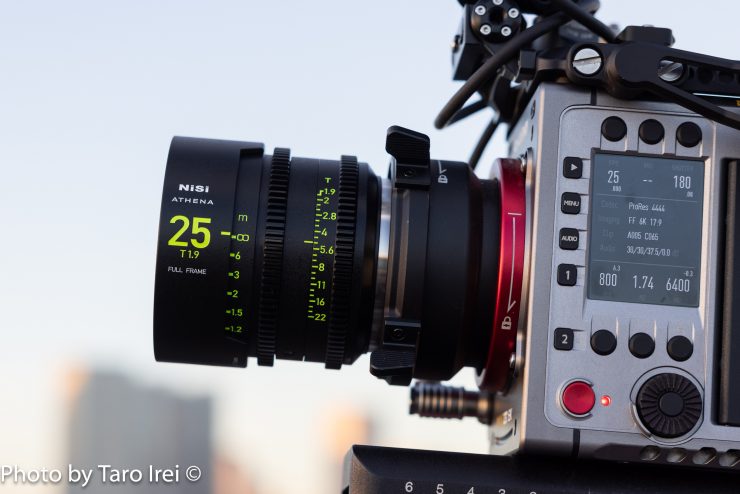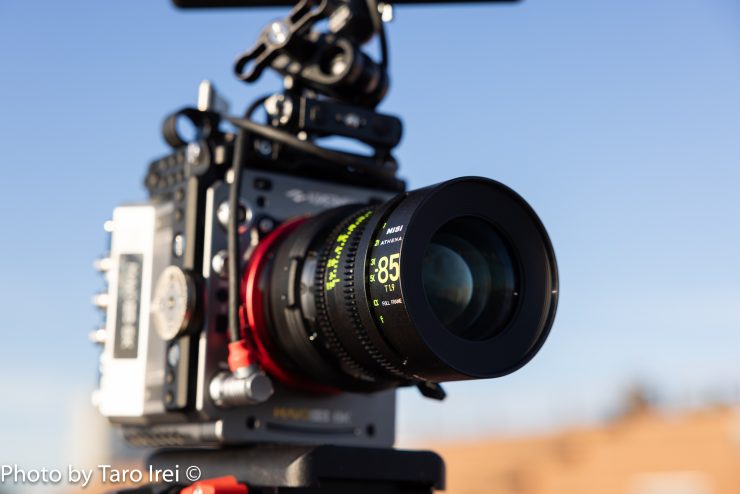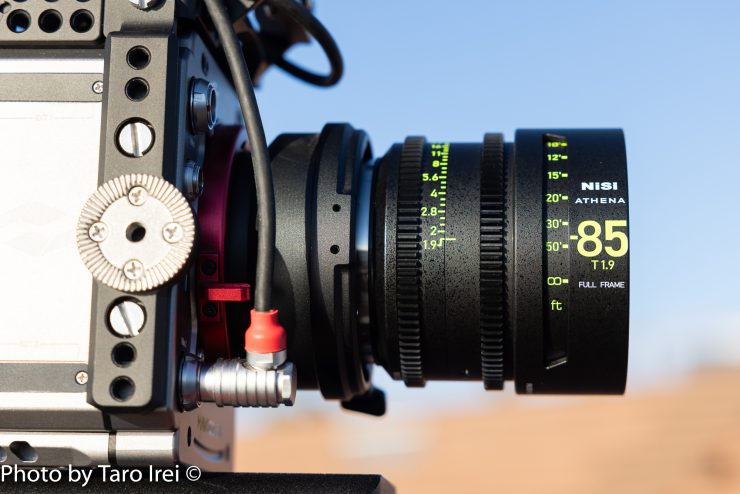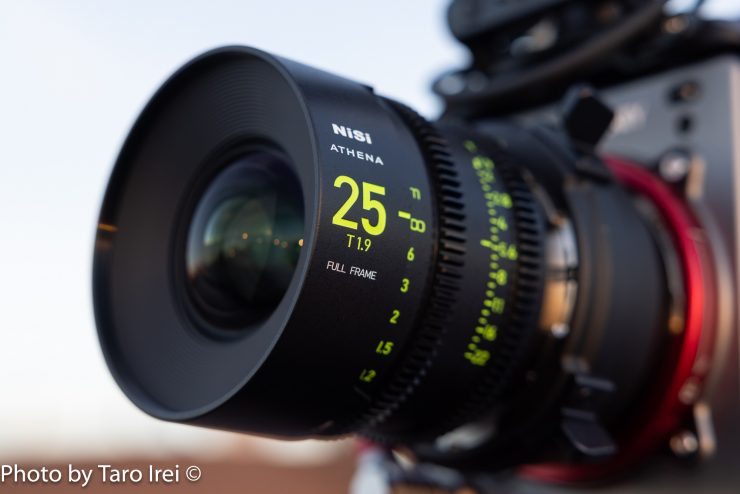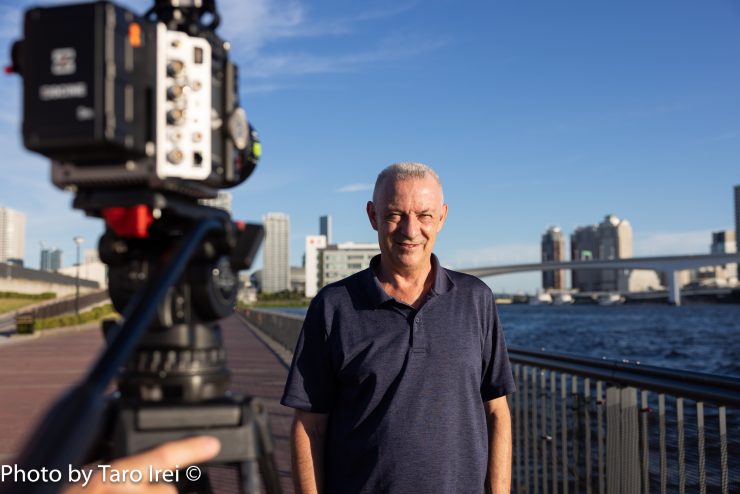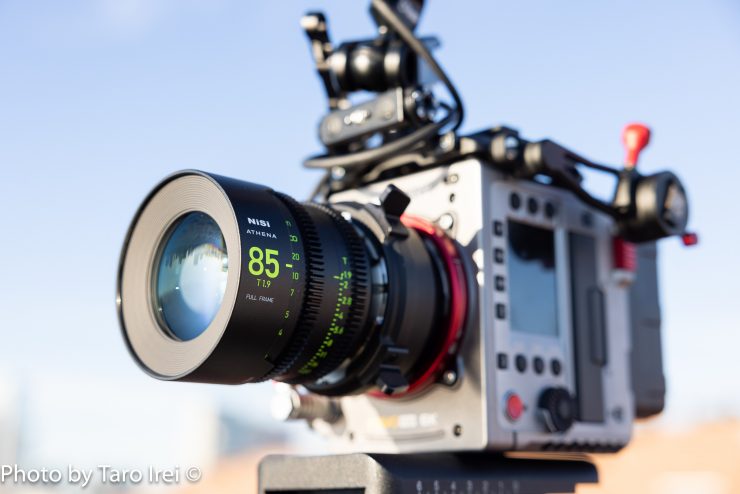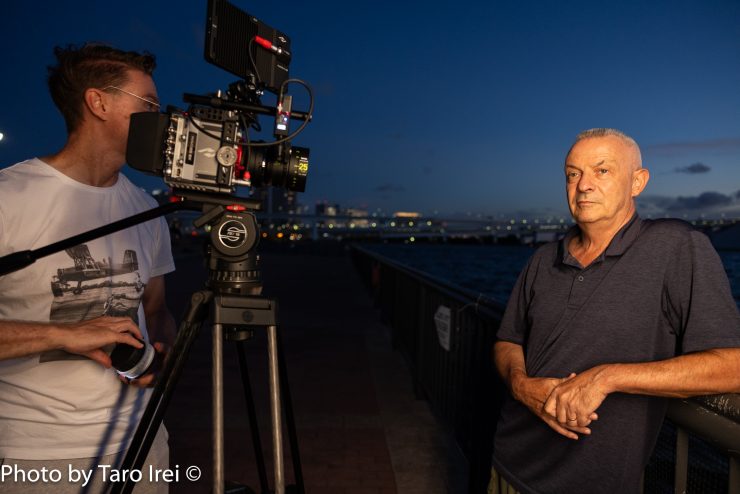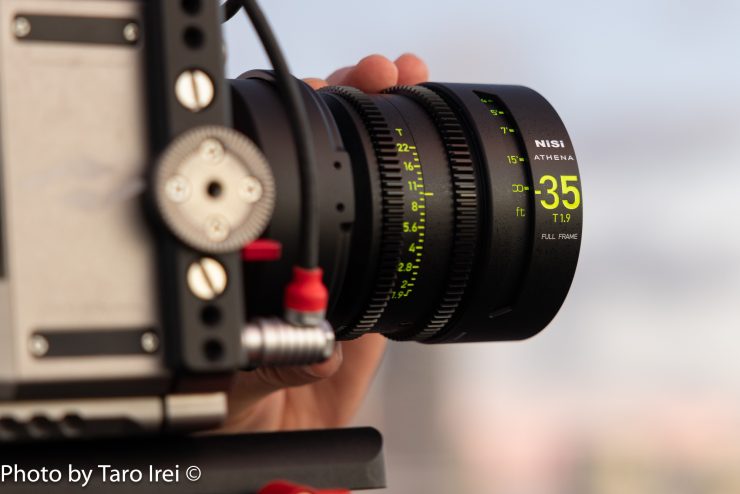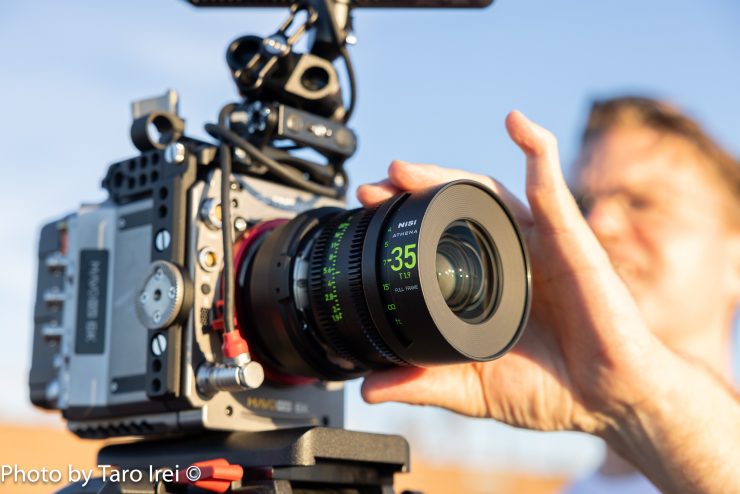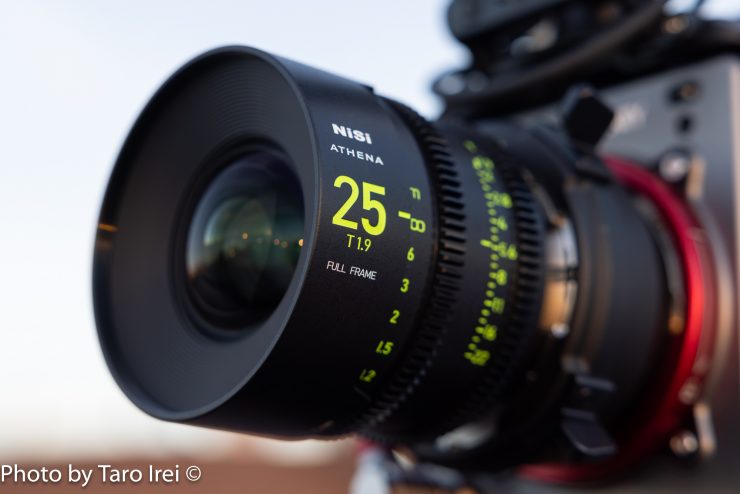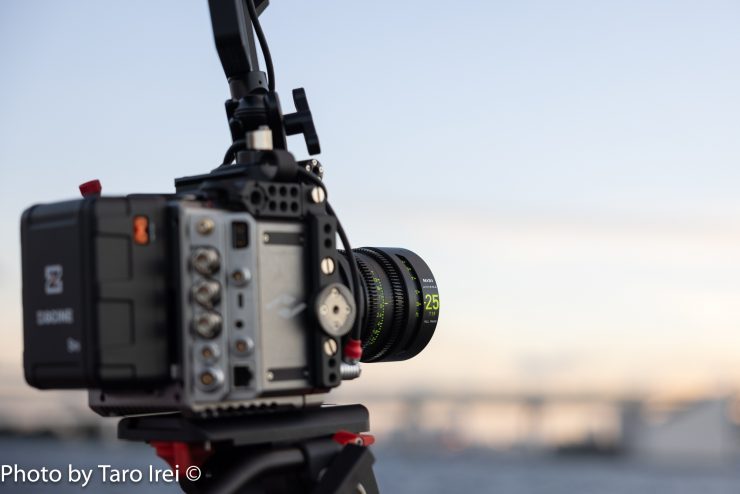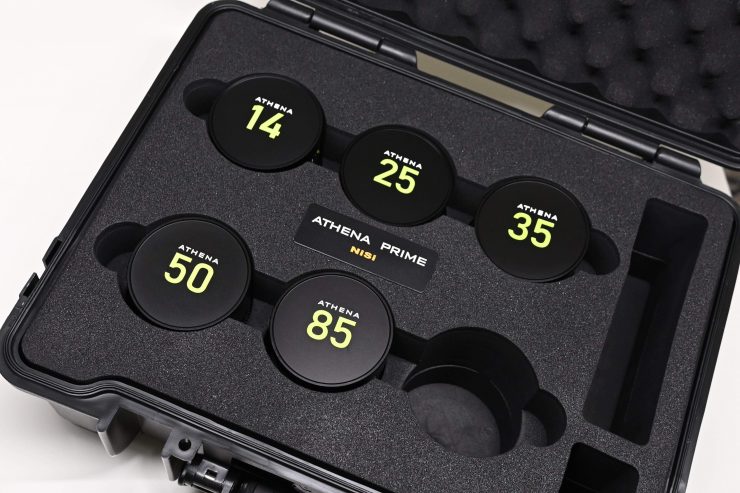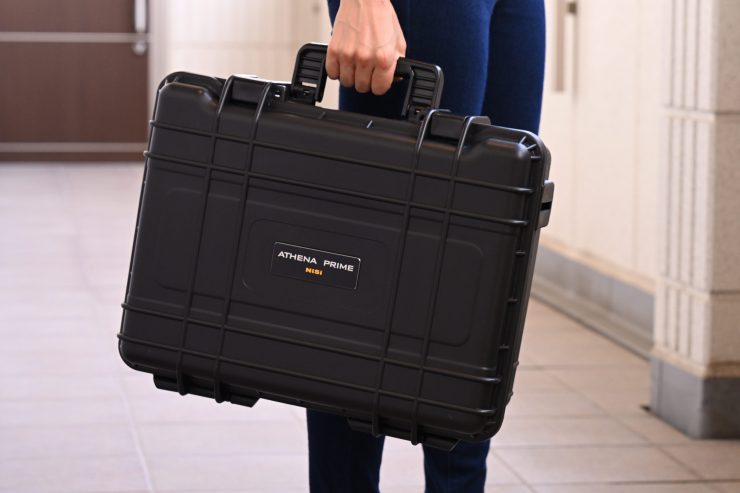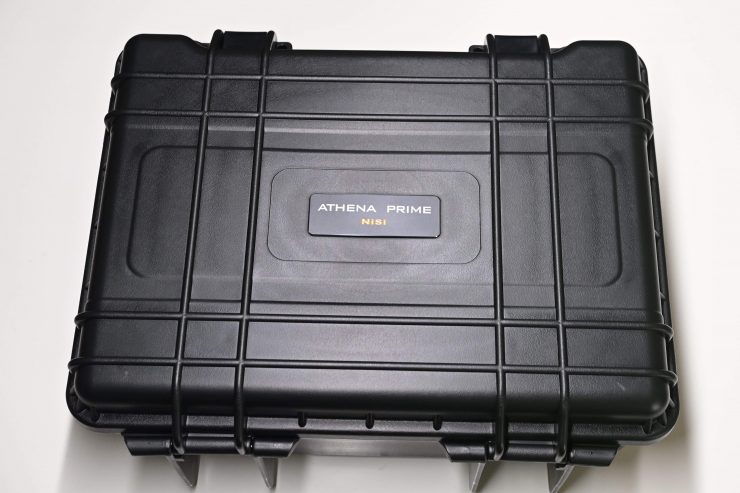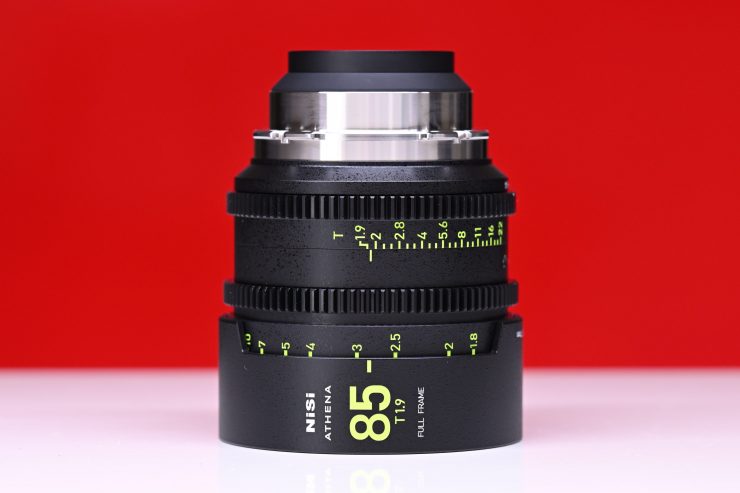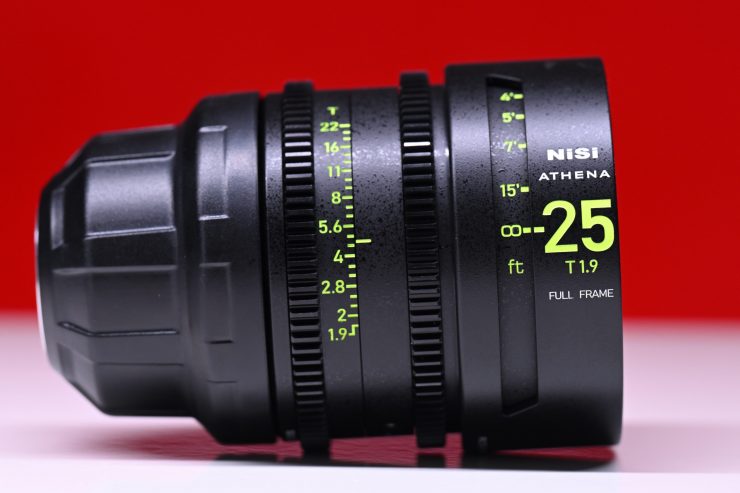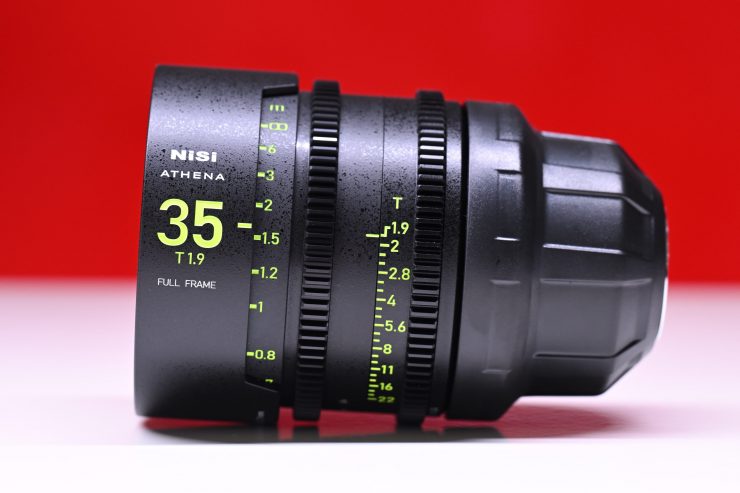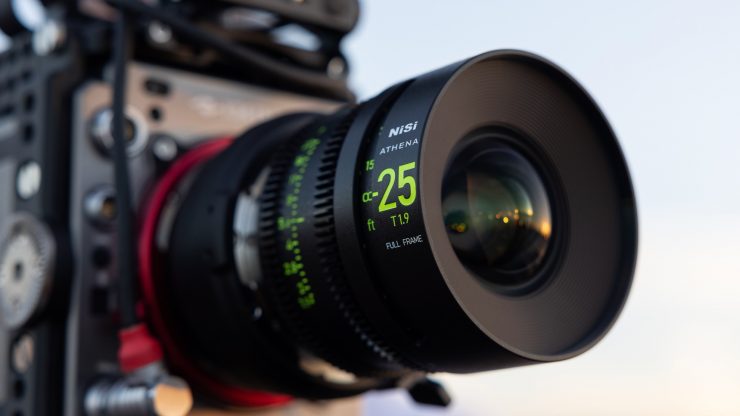
NiSi announced its new ATHENA Cine Prime lenses at NAB 2023. The Athena series are available in focal lengths ranging from 14mm up to 85mm and they all cover full frame sensors and image circles up to 46mm.
Above you can see our first look from NAB 2023.
The focal lengths are as follows:
- 14mm T2.4
- 25mm T1.9
- 35mm T1.9
- 50mm T1.9
- 85mm T1.9
NiSi already has a roadmap to add an 18mm and a 135mm to the range.
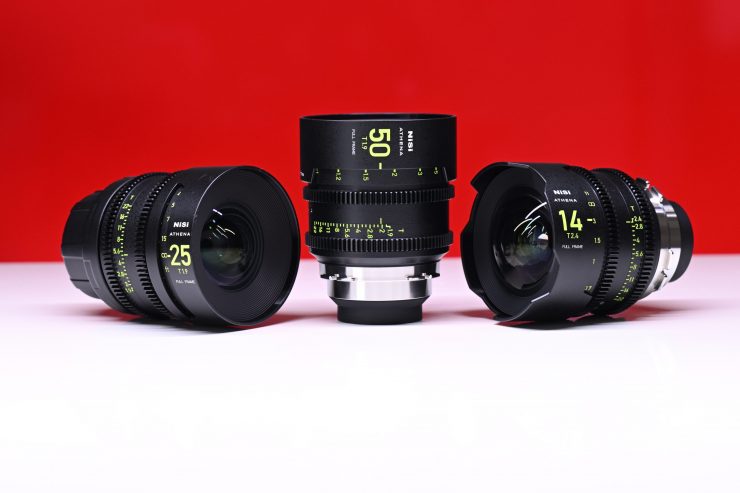
All of the lenses feature a T1.9 aperture, apart from the 14mm which is a T2.4.
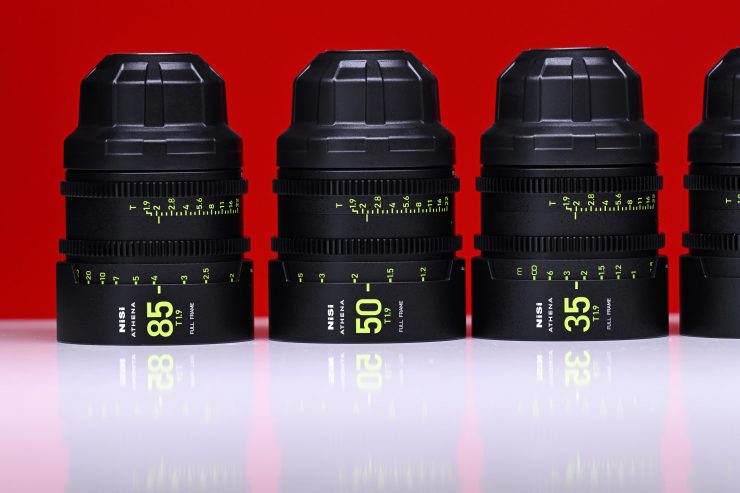
All the lenses are the same size and weight, and they feature a 77mm filter thread which makes it easy to use screw-on filters such as variable NDs.
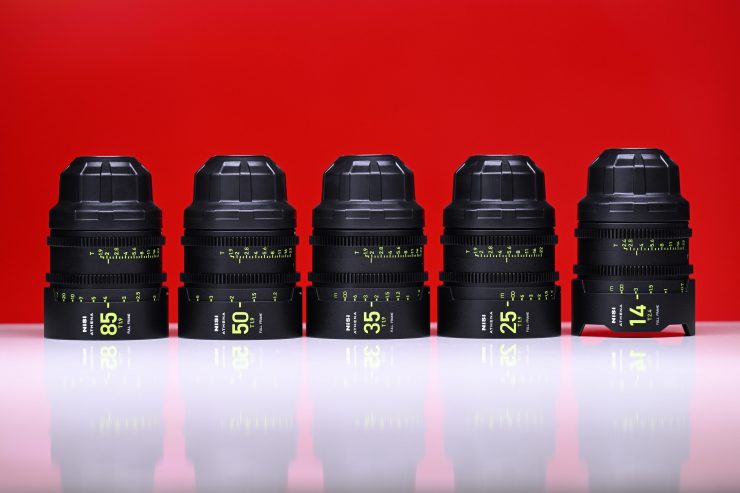
Along with being the exact same size, the aperture, and focus rings are all located in the exact same position which makes them easy to change out without having to re-position lens motors or re-balance a gimbal, etc. NiSi claims that they all have very little focus breathing, and I will put that claim to the test in this review.
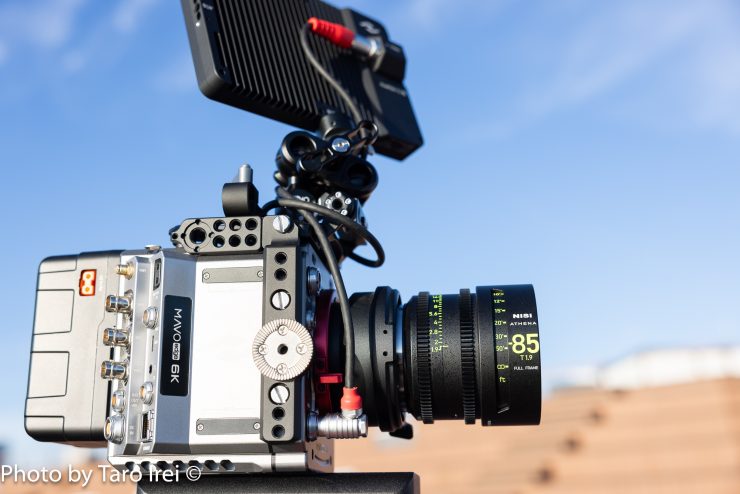
According to NiSi, the lenses were designed to achieve maximal micro-contrast control and ultra-low chromatic aberration.
Concept
The concept behind the NiSi ATHENA Primes was to come up with a lightweight, well-performing set of full-frame cine lenses that were affordable.
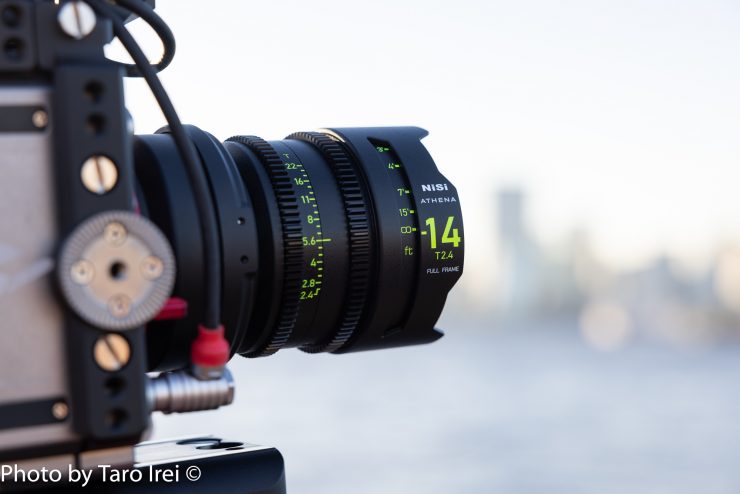
In recent years we have seen a vast array of affordable cine primes hit the market. There has arguably also been a stigma attached to brands that people are not familiar with, but you should never judge a book by its cover. Some of the affordable cine primes that are available are optically pretty good considering their low cost and they can arguably give much more expensive lenses a run for their money.
Build Quality
The NiSi ATHENAs are really well made, especially for full-frame cine primes at this price. The outside of the lens casing is a hard metal and it has been designed in a matte black finish to avoid light reflecting off it.
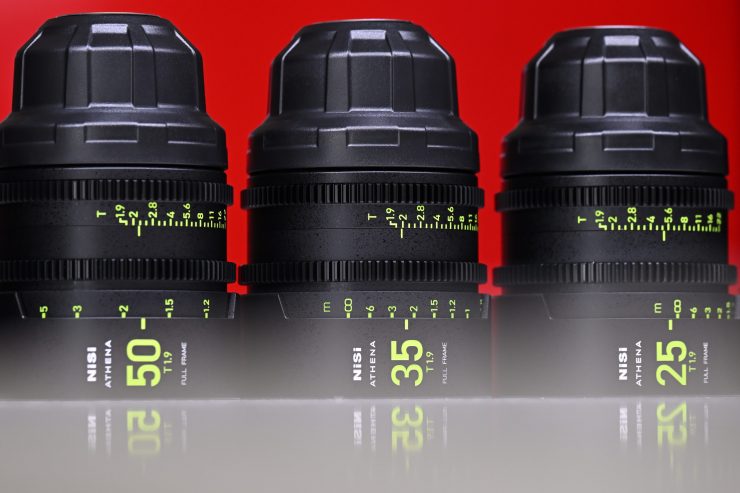
The biggest issue with most affordable cine lenses is when it comes to consistency. While one focal length might have good mechanics, another may not. Good sets of professional cine lenses have identical or almost identical mechanics and build quality.
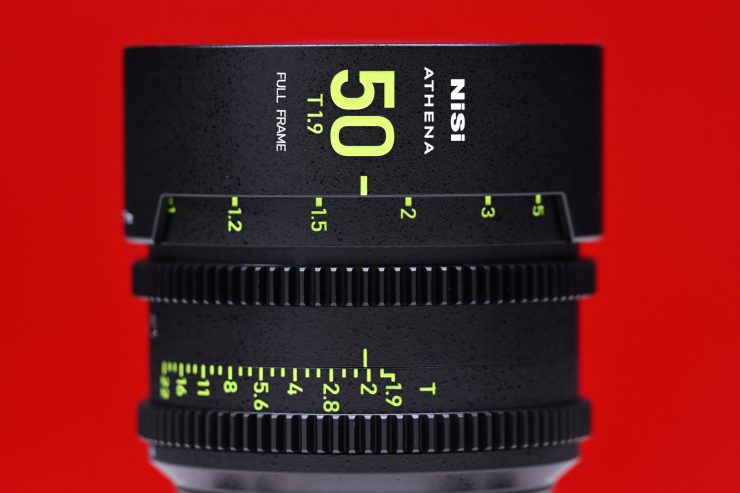
What I found with the NiSi Athena primes that pleasantly surprised me, was that the mechanics and build quality of all the focal lengths were very, very similar. While I wouldn’t go as far as saying that they were identical, they were pretty close. The NiSi ATHENA primes have the best mechanics of any of the affordable cine lenses I have ever tested.
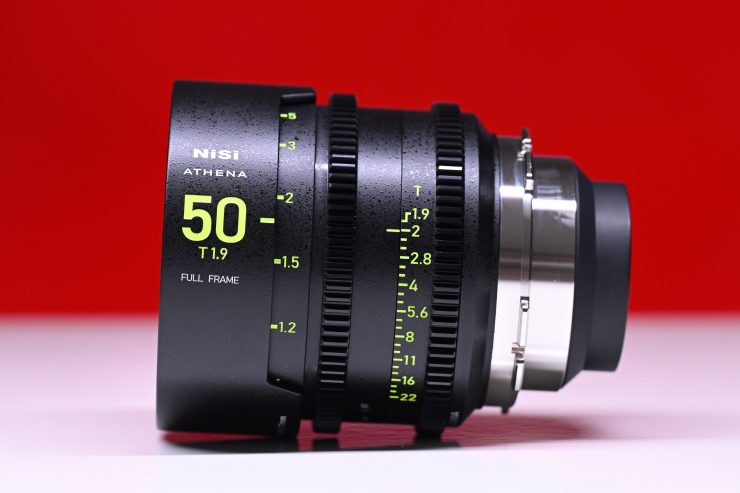
The focus rotation is 300-degrees. Despite the small size of the lenses, if you are pulling focus by hand you will find it hard to go from the minimum focus to the maximum focus point, but this is true of most cine primes and zooms.
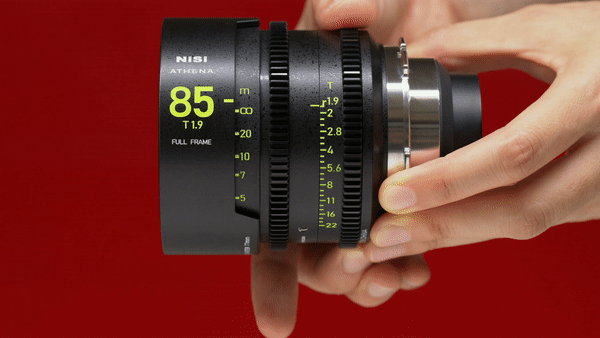
The dampening on the focus rings is very nice and they have just the right amount of resistance. The iris rings have slightly more dampening than the focus rings, but I personally think that is a good thing. As I previously mentioned, the consistency across the set was impressive and something you rarely see at lenses at this price point.
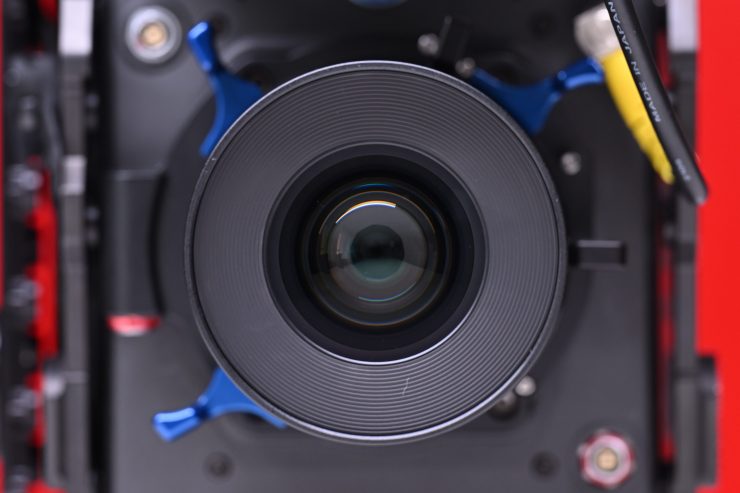
The PL mounts on the lenses don’t wobble around when attached to cameras or adapters.
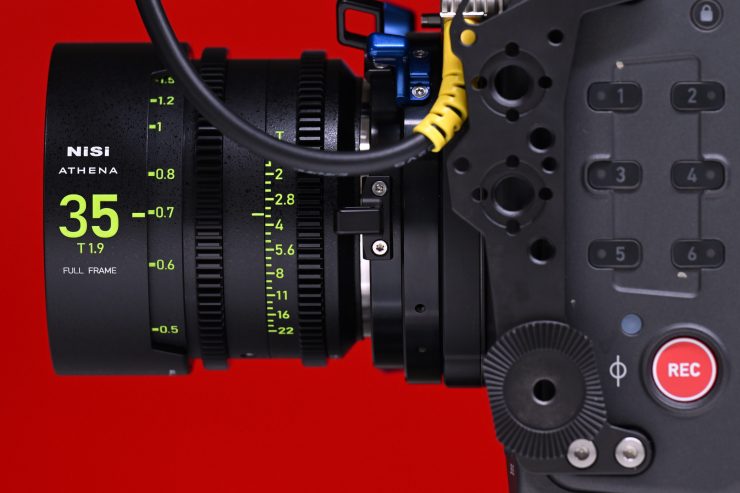
The lenses are reasonably understated when it comes to having names plastered all over them. I like that NiSi has kept things relatively clean and simple with the design.
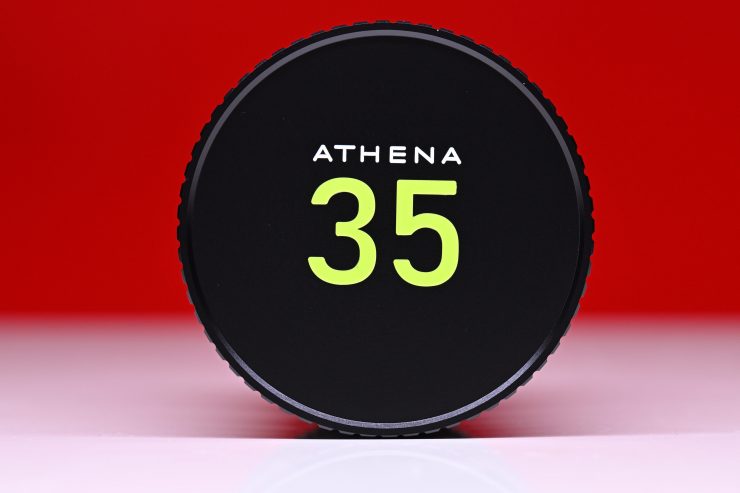
I also like that the lenses come with the focal length clearly displayed on the lens caps. The caps fit securely on the lenses because they have a bit of felt inside them which helps them grip on. It is nice to see well made and well fitting lens caps on an affordable lens series.
Size & Weight
The nice aspect about the ATHENA series is that all of the lenses that are currently available feature the exact same weight (roughly) and size (although the rear PL mounts are slightly different in length).
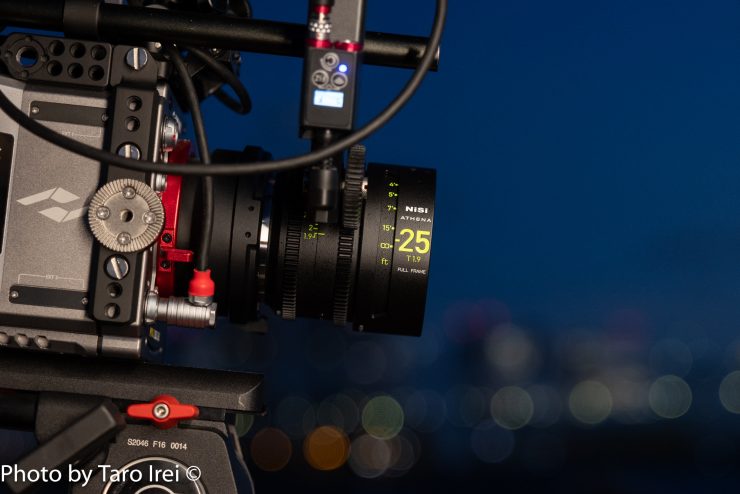
Having roughly the same size and weights is very handy, especially if you are using lens motors, gimbals, drones, etc. as you don’t have to reposition or rebalance anything. Well, maybe you might have to make a tiny adjustment, but it won’t be much.
Their size and weight, or lack of for that matter, makes this set very appealing for anyone using smaller-sized full-frame digital cinema cameras.
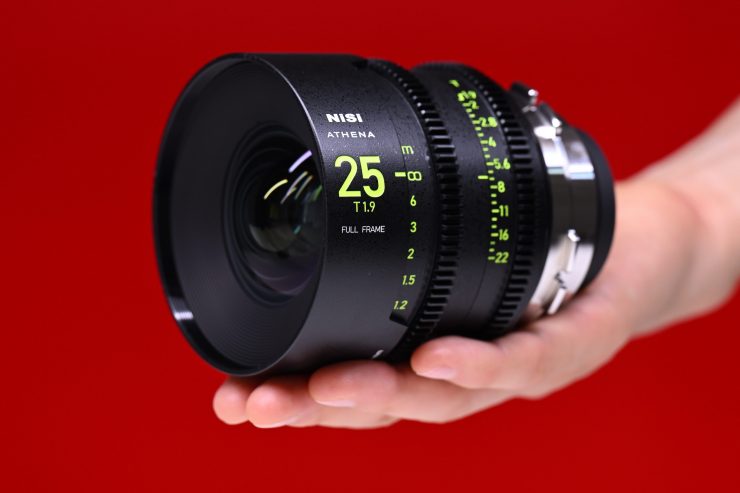
One of the reasons that the lenses all have the same weight is because NiSi has kept them at T1.9 (except the 14mm). If they had tried to make them all T1.5 this would have been a lot more difficult to accomplish.
| WEIGHT | MEASURED WEIGHT | |
| 14mm T2.4 | 28.2 oz / 800 g | 28.2 oz / 800 g |
| 25mm T1.9 | 28.2 oz / 800 g | 27.54 oz / 781 g |
| 35mm T1.9 | 28.2 oz / 800 g | 28.25 oz / 801 g |
| 50mm T1.9 | 28.2 oz / 800 g | 28.07 oz / 796 g |
| 85mm T1.9 | 28.2 oz / 800 g | 28.28 oz / 802 g |
Above you can see what the lenses weigh according to the specifications sheet and what I got when I independently weighed them
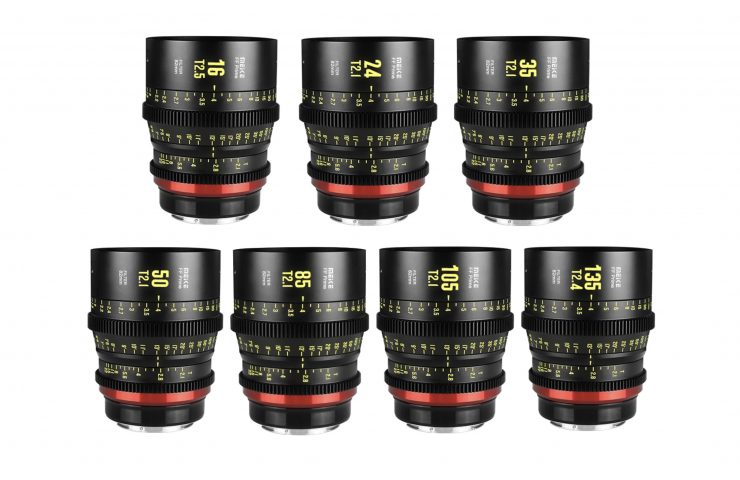
Below you can see how that weight compares to the Meike FF Prime Cine primes.
| WEIGHT | ||
| Meike FF Prime Cine 16mm T2.5 | 28.2 oz / 800 g | |
| NiSi Athena 14mm T2.4 | 28.6 oz / 812 g | |
| Meike FF Prime Cine 24mm T2.1 | 33.96 oz / 963 g | |
| NiSi Athena 25mm T1.9 | 28.2 oz / 800 g | |
| Meike FF Prime Cine 35mm T2.1 | 39.08 oz / 1108g | |
| NiSi Athena 35mm T1.9 | 28.2 oz / 800 g | |
| Meike FF Prime Cine 50mm T2.1 | 38.76 oz / 1099 g | |
| NiSi Athena 50mm T1.9 | 28.2 oz / 800 g | |
| Meike FF Prime Cine 85mm T2.1 | 38.02 oz / 1078 g | |
| NiSi Athena 85mm T1.9 | 28.2 oz / 800 g |
As you can see, the Meike FF Prime Cine lenses have different weights depending on the focal length.
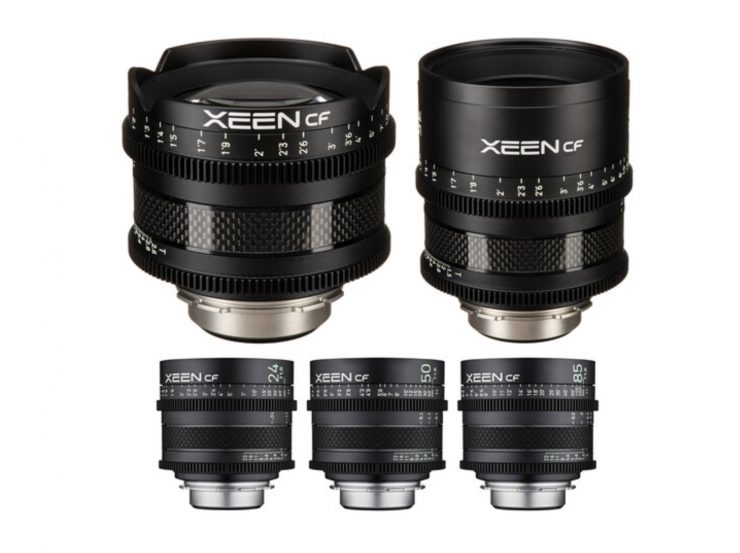
Below you can see how that weight compares to the Rokinon XEEN CF Pro Cine Lenses.
| WEIGHT | ||
| Rokinon XEEN CF 16mm T2.6 | 32.09 oz / 910 g | |
| NiSi Athena 14mm T2.4 | 28.2 oz / 800 g | |
| Rokinon XEEN CF 24mm T1.5 | 32.09 oz / 910 g | |
| NiSi Athena 25mm T1.9 | 28.2 oz / 800 g | |
| Rokinon XEEN CF 35mm T1.5 | 38.44 oz / 1090 g | |
| NiSi Athena 35mm T1.9 | 28.2 oz / 800 g | |
| Rokinon XEEN CF 50mm T1.5 | 32.09 oz / 910 g | |
| NiSi Athena 50mm T1.9 | 28.2 oz / 800 g | |
| Rokinon XEEN CF 85mm T1.5 | 35.27 oz / 1000 g | |
| NiSi Athena 85mm T1.9 | 28.2 oz / 800 g |
Three out of the 5 Rokinon XEEN CF Pro Cine Lenses have the same weight, but the 35mm and 85mm are slightly heavier.
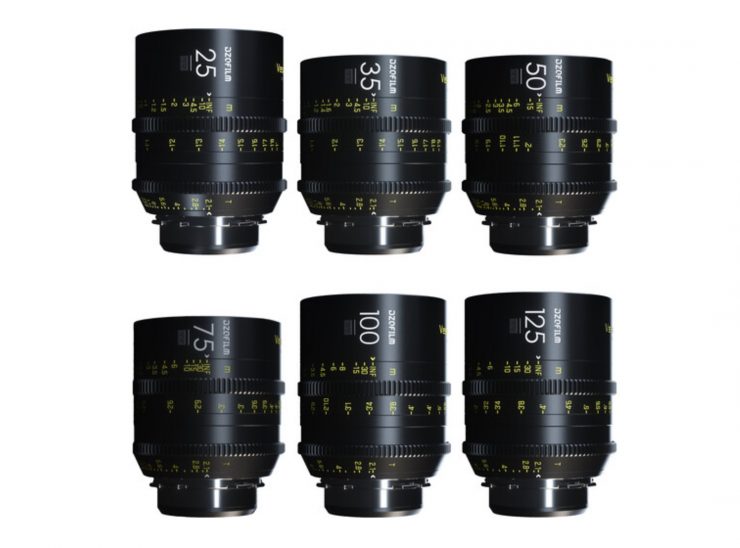
Below you can see how the NiSi ATHENA Cine Primes compare to the DZOFilm VESPID Cine Primes.
| WEIGHT | ||
| DZOFilm VESPID 16mm T2.8 | 32.8 oz / 930 g | |
| NiSi Athena 14mm T2.4 | 28.2 oz / 800 g | |
| DZOFilm VESPID 25mm T2.1 | 33.2 oz / 940 g | |
| NiSi Athena 25mm T1.9 | 28.2 oz / 800 g | |
| DZOFilm VESPID 35mm T2.1 | 29.4 oz / 834 g | |
| NiSi Athena 35mm T1.9 | 28.2 oz / 800 g | |
| DZOFilm VESPID 50mm T2.1 | 25.8 oz / 732 g | |
| NiSi Athena 50mm T1.9 | 28.2 oz / 800 g | |
| DZOFilm VESPID 75mm T2.1 | 30.5 oz / 865 g | |
| NiSi Athena 85mm T1.9 | 28.2 oz / 800 g |
As you can see, all of the DZOFilm VESPID Cine Primes have different weights.
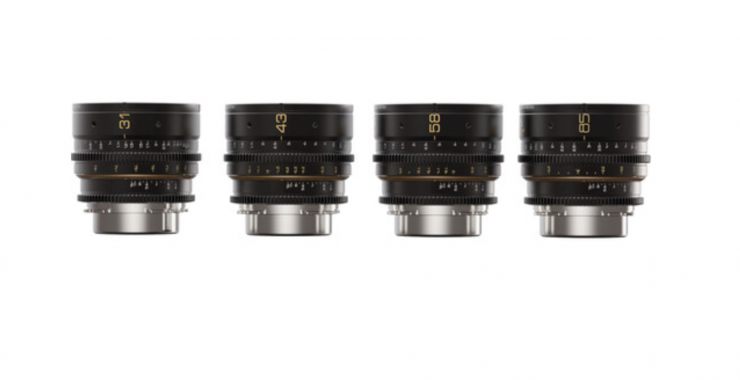
There are other lenses such as the soon-to-be-shipping Dulens APO T2.4 Mini Primes, but I won’t compare their weight as they come in slightly different focal lengths. If you are interested, the Dulens weights range from 510-530 g / 17.98-18.69 oz.
There are also other affordable full-frame cine lenses from companies such as Irix and SLR Magic, but they don’t offer the same focal lengths.
Markings
The lenses have markings on both the operator and non-operator sides. On the operator’s side, you have focus distance markings in meters and on the non-operators side, they are in feet. This is pretty common for affordable cine lenses these days as it saves the manufacturer from having to make two different versions.
The markings on the lenses are good, and unlike some other affordable cine lenses that I have reviewed, the infinity marks on the operator and non-operator sides line up correctly on all of the lenses. The focus markings are not 100% accurate, but they are close enough for budget cine primes.
The markings are well-displayed and easy to see. In a nice touch, they are also luminous so you can see them in the dark.
What mounts are they available in?
The NiSi ATHENA Prime Full Frame Cinema Lenses are available in PL, E, and RF mounts. There is also a Leica L mount version coming.
The lens mounts are not interchangeable.
Optical Construction
NiSi doesn’t list anywhere what the optical construction of the lenses is. I don’t know how many groups or elements are in the lens design. They do, however, all have 10 aperture blades.
Filter Options
All of the lenses (except the 14mm) feature a 77mm front filter diameter which makes it easy to use variable ND and other filters if that is required.
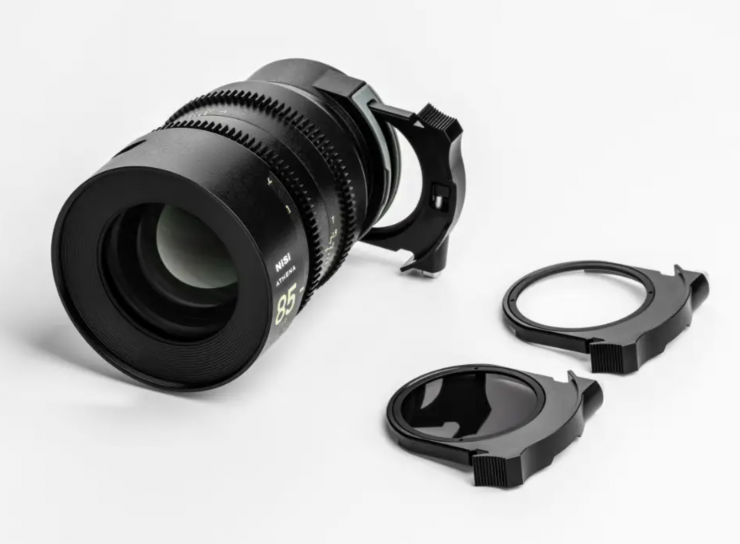
The E and RF mounts are also equipped with a drop-in filter mount. The slight caveat is that you have to use NiSi’s own filters. NiSi will be making a wide array of filters that you will be able to use, including VND, fixed ND, diffusion filters, etc.
The PL mount versions have a rear filter mount that isn’t magnetic like what ARRI does with its Signature primes and zooms, it is a standard screw-on.
I personally like this ability to be able to run rear filters, because it gives you added versatility and allows you to change the look of the lens without needing to attach a matte box or run a larger front-mounted filter.
Now, I wasn’t able to see how this works because I don’t have any rear filters that work with these lenses.
The front diameter of the lenses is ø80mm/3.15″ in case you are interested. This does make them slightly more tricky to run with clip-on matte boxes and you would need to use one that offers a compatible adapter ring.
How do they work with PL adapters that have rear drop-in filters?
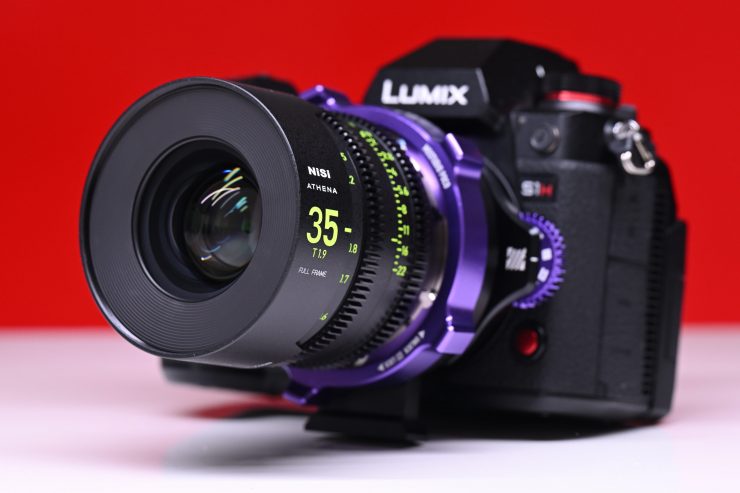
I tested all the NiSi ATHENA primes with the MOFAGE POCO Drop-In Filter Lens Mount Adapter Kit (Leica L to PL).
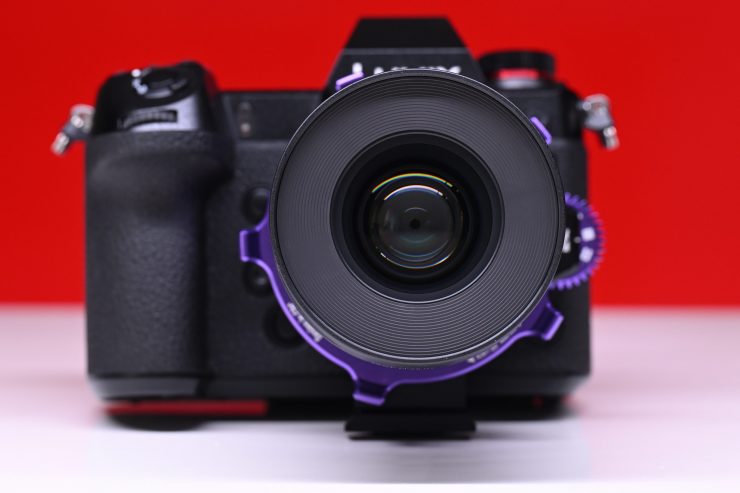
Now, I have heard reports about the lenses not working with PL adapters that have drop-in filters, so let’s find out if there are any issues.
The lenses will fit on the adapter without any clearance issues if you set them at their minimum focusing distance. However, here is where we run into another issue. With all of the focal lengths, except the 25mm T1.9, you will have clearance issues when trying to focus.
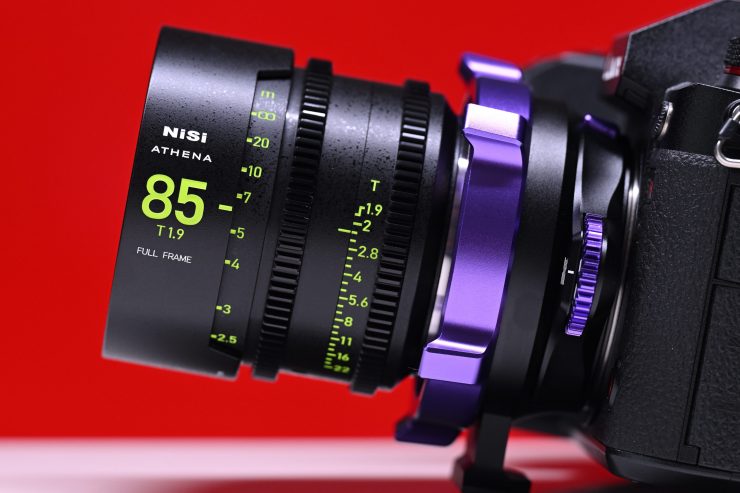
For example, if we look at the 85mm T1.9 you can only focus to around 7′. It is a similar story with the 14mm, 35mm, 50mm, and 85mm focal lengths.
If you try and put them on an adapter when the focus is set from around mid to infinity distances then they will foul on the mount and will not fit. As I just mentioned, you can put the lenses on the adapter when the focus is set at a minimum distance but that is of little consequence due to the issues I have just talked about.
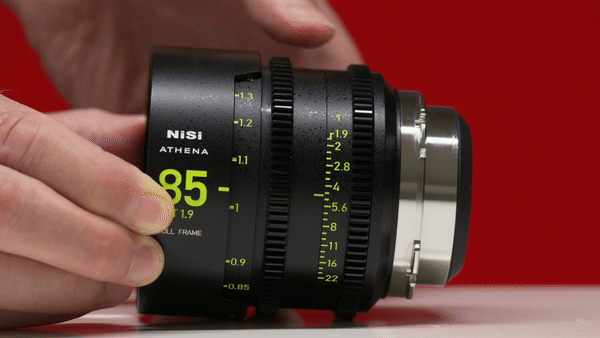
The problem people are encountering when using them with PL adapters with drop-in filters is, because of the design of the PL mount versions of these lenses, the rear PL mount actually extends as you move the focus toward infinity.
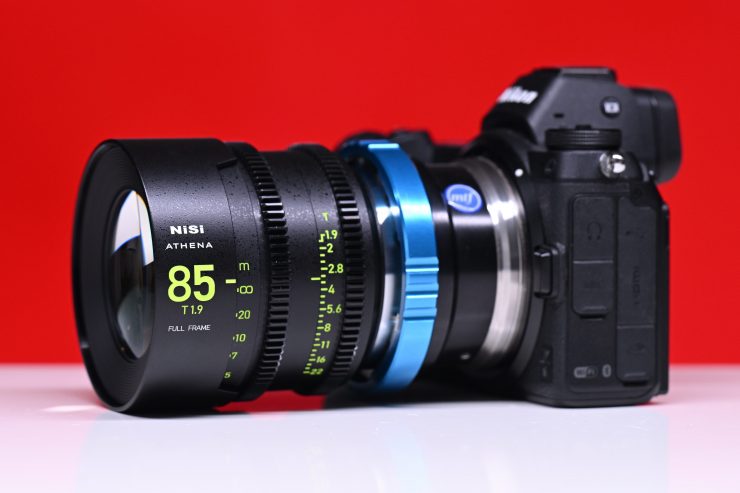
I want to make it crystal clear that this is only an issue with PL mount adapters that use drop in filters. With regular PL adapters, there are no issues when using any of the focal lengths.
I have only tried the lenses with the MOFAGE POCO Drop-In Filter Lens Mount Adapter Kit (Leica L to PL) so I can’t say that they will work with different mount versions.
If you were planning on buying a set of these NiSi primes to use with a PL mount adapter that uses drop-in filters and a small digital cinema camera or mirrorless hybrid then you are out of luck.
Who is NiSi?
NiSi Lens is a division of NiSi Optics. NiSi has been around since 2005 and I have reviewed some of their filters on the site over the years. They have released more than 100 different kinds of filters and holders and they hold 20 international patents for technology and design.
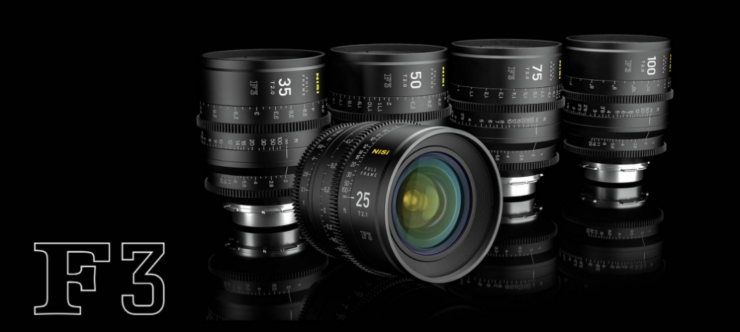
The ATHENA primes aren’t NiSi’s first foray into making cine lenses. You may well remember back in 2018 when they released the F3 full frame PL mount prime lenses. That full frame PL lens set originally came in five focal lengths- 25mm T2.1, 35mm T2.0, 50mm T2.0, 75mm T2.0, and a 100mm CF T2.0.
The NiSi F3 prime lenses covered 46.5mm format sensors and they were the same lenses that were sold by Kinefinity under the MAVO name. NiSi manufactured the lenses and Kinefinity just re-branded them.
Close Focus Ability
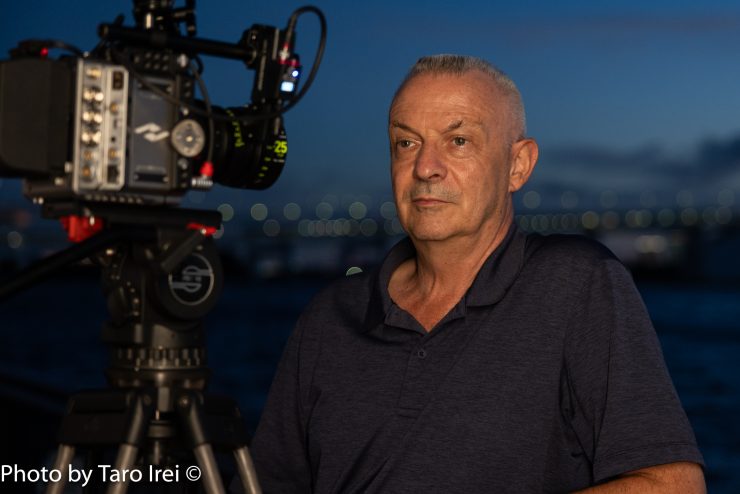
All of the focal lengths were designed to be able to focus reasonably close to your subject.
| MOD | |
| 14mm T2.4 | 9.84″ / 25cm |
| 25mm T1.9 | 11.8″ / 30cm |
| 35mm T1.9 | 11.8″ / 30cm |
| 50mm T1.9 | 19.7″ / 50cm |
| 85mm T1.9 | 31.5″ / 80cm |
The close focus ability of the 14mm, 25mm, and 35mm is particularly good.
Below you can see how that MOD compares to the Meike FF Prime Cine primes.
| MOD | ||
| Meike FF Prime Cine 16mm T2.5 | 9.84″ / 25cm | |
| NiSi Athena 14mm T2.4 | 9.84″ / 25cm | |
| Meike FF Prime Cine 24mm T2.1 | 11.8″ / 30cm | |
| NiSi Athena 25mm T1.9 | 11.8″ / 30cm | |
| Meike FF Prime Cine 35mm T2.1 | 12.99″ / 33cm | |
| NiSi Athena 35mm T1.9 | 11.8″ / 30cm | |
| Meike FF Prime Cine 50mm T2.1 | 23.62″ / 60cm | |
| NiSi Athena 50mm T1.9 | 19.7″ / 50cm | |
| Meike FF Prime Cine 85mm T2.1 | 33.46″ / 85cm | |
| NiSi Athena 85mm T1.9 | 31.5″ / 80cm |
As you can see, the NiSi 35mm, 50mm and 85mm have a slightly closer focusing ability than the Meike.
Below you can see how the MOD compares to the Rokinon XEEN CF Pro Cine Lenses.
| MOD | ||
| Rokinon XEEN CF 16mm T2.6 | 11.8″ / 30cm | |
| NiSi Athena 14mm T2.4 | 9.84″ / 25cm | |
| Rokinon XEEN CF 24mm T1.5 | 9.8″ / 25cm | |
| NiSi Athena 25mm T1.9 | 11.8″ / 30cm | |
| Rokinon XEEN CF 35mm T1.5 | 12.99″ / 33cm | |
| NiSi Athena 35mm T1.9 | 11.8″ / 30cm | |
| Rokinon XEEN CF 50mm T1.5 | 17.7″ / 45cm | |
| NiSi Athena 50mm T1.9 | 19.7″ / 50cm | |
| Rokinon XEEN CF 85mm T1.5 | 44.1″ / 112cm | |
| NiSi Athena 85mm T1.9 | 31.5″ / 80cm |
The Rokinon XEEN CF 25mm and 50mm T1.5 has a slightly closer focusing ability than the NiSi, but the NiSi is better at 50mm and 85mm.
Below you can see how the NiSi Athena Cine Primes MOD compares to the DZOFilm VESPID Cine Primes.
| WEIGHT | ||
| DZOFilm VESPID 16mm T2.8 | 9.84″ / 25cm | |
| NiSi Athena 14mm T2.4 | 9.84″ / 25cm | |
| DZOFilm VESPID 25mm T2.1 | 11.8″ / 30cm | |
| NiSi Athena 25mm T1.9 | 11.8″ / 30cm | |
| DZOFilm VESPID 35mm T2.1 | 11.8″ / 30cm | |
| NiSi Athena 35mm T1.9 | 11.8″ / 30cm | |
| DZOFilm VESPID 50mm T2.1 | 14.56″ / 37cm | |
| NiSi Athena 50mm T1.9 | 19.7″ / 50cm | |
| DZOFilm VESPID 75mm T2.1 | 23.62″ / 60cm | |
| NiSi Athena 85mm T1.9 | 31.5″ / 80cm |
As you can see, the DZOFilm VESPID Cine Primes have a better close focus ability at 50mm.
No Breathing?
I tested out the lenses by doing large focus throws, and while there is some small amounts of breathing it is reasonably well contained. I personally don’t like focus breathing as it can be very distracting. It is good to see that most budget-friendly cine lenses have minimal amounts of lens breathing.
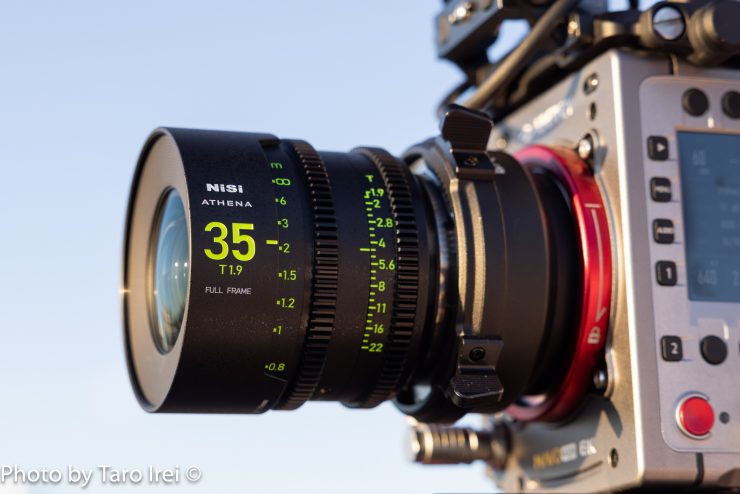
No lens technically has zero breathing, but very good cinema glass has such minimal amounts that it is virtually impossible to see. What you will normally see is some perspective shift which is normal when refocusing a lens.
Image shift is the change in location of a fixed point after a focus rack. It should be in the same spot after you rack focus.
Perspective shift is the focal length of the lens being modified by the movement of the optics. A slight change in focal length may happen if there is a floating element that moves and is not properly corrected for in the design. Certainly, the great majority of lenses have this issue. It’s also tenths of a mm so not overly noticeable.
Focus breathing is a change in image size so the size of the object will get larger as it moves out of frame. That is reproduction size.
In summary, perspective shift is the effective focal length change (angle of view change) and focus shift is the reproduction size of the object changing as focus moves. Think of it like Macro. A macro lens can be 1:1 life-size reproduction but as you focus it can change the reproduction size. That is focus shift from intentional breathing design. The angle of view is not overly affected in that case because it is flat field focus. On spherical lenses, the angle of view does change slightly as you focus rack thus making for perspective/angle of view shift.
Fall off, Image Coverage & Vignetting
As the lenses all cover a 46mm image circle, when you use them on a full-frame-sized sensor you get very good illumination across the entire image, except with the 14mm T2.4. With this lens, there is a bit of light loss out towards the edges of the frame when used wide open. However, I didn’t personally feel like this was a big deal in most real-world shooting scenarios as most people are not going to shoot at T2.4 with such a wide-angle lens.
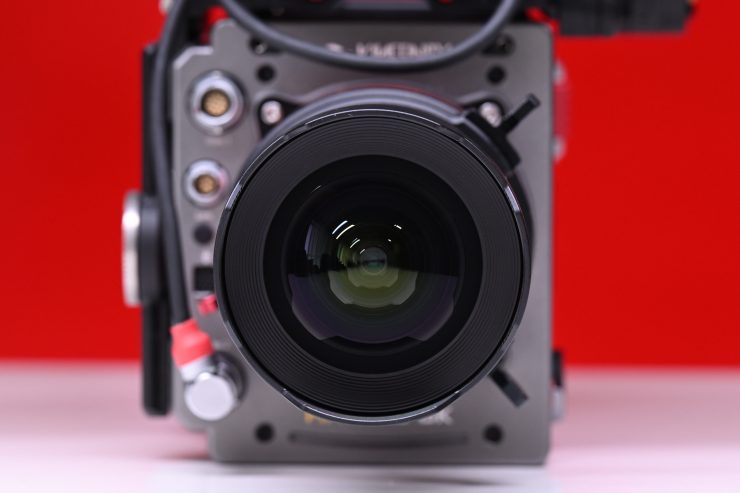
I didn’t see any vignetting when shooting 6K 17:9 full-frame on the Kinefinity MAVO LF or when shooting Open gate.
Sharpness
The growing trend that is common with quite a few of the affordable cine zooms and primes these days is to come up with something that is a little more vintage, and that sometimes comes at the expense of sharpness. I was curious to see if the ATHENA primes followed that trend.
Above you can see how all of the focal lengths perform at various T stops and what the edge sharpness is like. All of the tests were shot using the Kinefinity MAVO LF in 6K DCI.
Now, the reason I always use this robot is that it has very fine details on it and it is very easy to see if something is sharp or not. While there is nothing wrong with shooting charts, we don’t shoot charts for a living so I prefer to use this method. I always use this same robot, so you can go and check other lens tests I have previously done to see any type of comparison.
14mm T2.4
The 14mm T2.4 lens shows good center sharpness even when used wide open. Even if we crop in 300% on the image it is still sharp at T2.4. Stopping down slightly does improve sharpness and by T4 it is very sharp.
As you would expect for a 14mm T2.4 lens at the price, the edge sharpness when used wide open was not great, especially if you pixel peep. At T5.6 the edge sharpness is considerably better as you would expect.
25mm T1.9
The 25mm T1.9 is very sharp in the center, even at T1.9. Stopping down does improve things slightly, but I would have absolutely no issues using this lens wide open. What I did notice is that at T1.9 and T2.8 you will get some chroma bleeding on the edges of the bokeh if you look closely. This starts to disappear at T4 and above.
Just like with the 14mm, the edge sharpness wasn’t great, and if you pixel peep it is pretty soft. Again, by T4-5.6 things improve dramatically.
35mm T1.9
The 35mm T1.9 has pretty good center sharpness, even when used wide open. It does improve as you start stopping the lens down. I didn’t personally think it was quite as sharp as the 25mm T1.9. Again, just like the 25mm, there was chroma bleeding on the edges of the bokeh all the way up to T5.6.
The edge sharpness when using the lens wide open was pretty bad, but it does sharpen up considerably once you hit T5.6. Wide open the edge sharpness, at least in my opinion was worse than that of the 25mm.
50mm T1.9
The 50mm T1.9 lens performs very well and it is sharp even when used wide open. There was no significant chroma bleeding on the edges of the bokeh like you see on the 14, 25, and 35mm focal lengths.
The edge sharpness was better than that of the 14, 25, and 35mm focal lengths when used wide open. Just like the rest of the lenses, once you stop down to T5,6, edge sharpness is good.
85mm T1.9
Just like the 50mm, the 85mm is very sharp and shows a lot of fine detail. It is arguably the sharpest of all the 5 lenses.
The edge sharpness was also pretty good for an affordable Cine Prime, even when used wide open.
Lens Flare
The lenses all have different flare characteristics. The lenses do tend to produce quite a lot of halation around strong light sources when used wide open, except with the 14mm T2.4. The halation is the strongest with the 50mm and 85mm. If you stop the lenses down, that amount of halation gets massively reduced.
The 14mm T2.4 does produce quite a lot of cylindrical reflections because of its front petal design that protects the lens.
The 35mm does have some lens veiling when used wide open and you can see the strong amount of chroma bleeding on the edges of the bokeh. Even if you stop the lens down to T5.6 there is still some veiling present.
Lens flare is very much a personal thing and whether you like the flares these lens produces only you will know.
Chromatic Aberration
Something you don’t want when shooting is chromatic aberration unless you are going with that creative choice (although I could make an argument that no one wants chromatic aberration!) The 14mm T2.4 doesn’t have any real-world signs of chromatic aberration, but the 25mm and 35mm certainly do. The 35mm is particularly bad and I needed to stop down to around T5.6 to get rid of it. The 50mm and 85mm have almost no signs of CA even when used wide open.
If you zoom into the image by 300% when used wide open at T2.8 you can see a very, very small amount of color fringing on reflective surfaces and over-exposed areas.
Chromatic aberration is something I couldn’t see on the competing Meike FF Cine primes, but again, they are also slightly slower at T2.1.
Color Consistency
What you don’t want with lenses is any type of inconsistent color. With a good-matched set, all the lenses in the series should have the same color consistency.
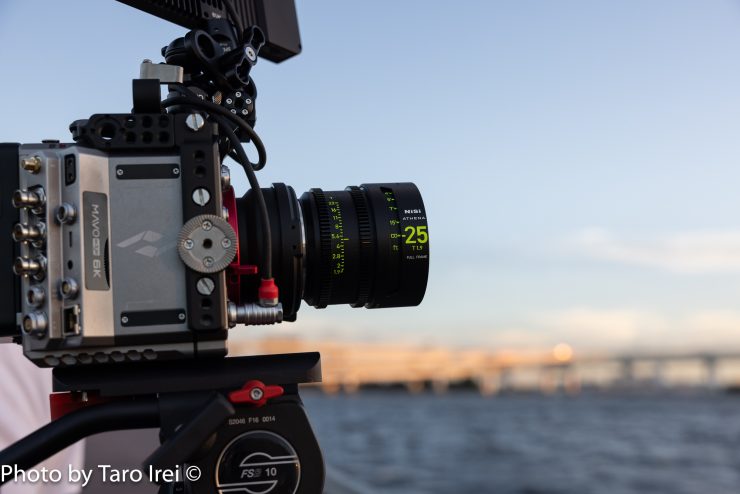
I am happy to report that the color consistency was very good across all of the focal lengths. While I wouldn’t say it absolutely dead on, it is close enough that you are not going to notice anything in the real world.
It is nice to see an affordable set of cine primes that have good color consistency.
Bokeh
Nice bokeh is something everybody craves. The bokeh produced is different from lens to lens. With some of the focal lengths, it is reasonably nice and round even when you stop the lenses down to around T4. There are some signs of onion rings with some of the focal lengths, and the bokeh does change shape out towards the edges of the frame. My biggest issue is with the 35mm which produces a lot of chroma edge bleeding on the bokeh, and this happens all the way down to T4.
I would have preferred to have seen more consistency when it comes to the look and shape of the bokeh.
Whether you like the out-of-focus areas you can achieve with these lenses I will leave it up to you to decide.
Distortion
I did find that the 14mm has some barrel distortion, but it is reasonably very well controlled for such a wide full-frame lens. There is also some with the 25mm. With both the 14mm and 25mm you need to be careful of what you are filming if you are too close to your subject. Close-up shots of people with both of these lenses will not look great.
Color Tone
The NiSi ATHENA primes are fairly neutral when it comes to color tone. At least in my opinion, they do lean a little more toward cooler tones, but I wouldn’t say they are as cool as a Zeiss. The lens isn’t too clinical, especially when used wide open. What look you actually prefer from a lens is entirely going to come down to personal choice. As I mentioned earlier, what was nice to see is that all of the lenses in the series shared a common color tone. While they may have slightly different flare characteristics, they all worked well together.
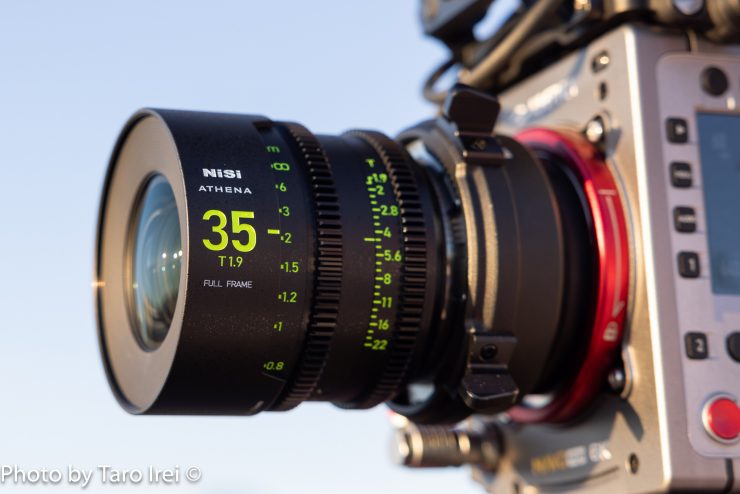
The color tone of a lens is really something you should look at closely if you are going to be using both prime and zoom lenses from different manufacturers. Certain prime and zoom lenses work better together than others. What will work for you will also depend on what camera you are using.
Real World Thoughts
The NiSi ATHENA primes would be right at home on cameras such as the Canon C70, R5C, R5, Sony FX3, FX6, FX9, VENICE, RED V-Raptor, ARRI ALEXA Mini LF, ARRI Amira, ARRI ALEXA 35, Kinefinity MAVO LF, EDGE, etc, etc.

You could also use them on smaller-sized mirrorless hybrids given their relatively low weight and size. There really isn’t any reason why you couldn’t use these lenses on any camera, and I think that’s one of the biggest appeals.
I went and took some shots with the lenses and a Kinefinity MAVO LF to see how they performed in the real world.
Above you can see some footage captured with the lenses. I primarily wanted to see what they looked like at various focal lengths, the bokeh, CA, and focus breathing, etc. I haven’t added any sharpness in post so you can see exactly what you get. The footage isn’t overly exciting, but hopefully it gives you an idea about what the lenses look like in real-world shooting conditions. I am sorry I couldn’t do more, but there are only so many hours in the day!
The lenses are easy to operate and use, and as I mentioned earlier in the review, the mechanics are very consistent across the focal lengths.
The overall optical performance of the lenses is pretty good, especially when it comes to center sharpness. You can certainly use all of the focal lengths wide open without any sharpness issues. The edge sharpness isn’t great when using the lenses wide open, especially with the 14, 25, and 35mm. The 25mm and 35mm do certainly show signs of chromatic aberration. The bokeh is reasonably pleasing, except I did find the color bleeding when using the 35mm very distracting. The lenses have very little breathing which is nice to see.
The lenses are reasonably clinical and are not in any way vintage. I hate using the word character because I often think that term is overused and thrown around by companies who are, let’s face it, just making lenses that are not optically good.
The lenses do exhibit quite a lot of halation with bright light sources when used wide open, so you could very well argue that they are not overly clinical.
While there is certainly nothing wrong with wanting to create a certain look or have lenses that have certain optical characteristics that may or may not be considered good, I personally prefer to use clean lenses that I can then decide to change up by using filters or altering some of their characteristics in post. With optically sound lenses you can make creative choices, however, with a lot of so-called ‘vintage lenses’ or lenses with character, you can’t choose to make something optically better.
Again, each to their own, and you should use whatever lens works for you and your requirements. There is no such thing as the perfect lens, because perfect means different things to different people.
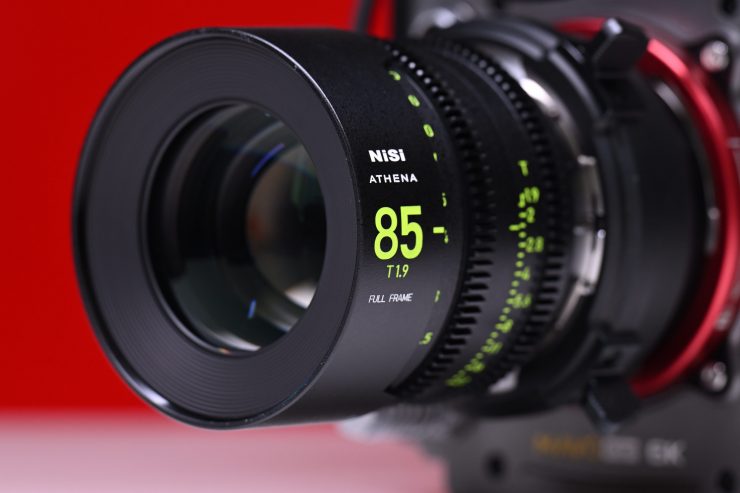
The problem NiSi could well face is that they are not as well known as some other brands and they don’t have a long history of making cine lenses. Without having previous brand recognition it will always be hard to convince potential customers to buy your product. In saying that, you should never judge a book by its cover and you should always judge a product on its merits and not based on a brand name. Based on how many sets of the lenses NiSi has already pre-sold, I would imagine that they will quickly overcome any stigma that some people associate with Chinese lenses.
NiSi also only has 5 focal lengths available at the moment, and competing companies such as DZO, Meike, and Rokinon have more focal lengths available. In saying that, I think it is highly likely that we will see NiSi make quite a few more focal lengths if the demand is there.
What you also need to think about carefully is if you are someone who is using primes and zooms, what zooms will pair well with these lenses. The biggest advantage someone like DZOFilm currently has in the affordable cine lens space is that they make both zooms and primes. Even though a lot of their lenses don’t match that well, in a lot of cases, shooters like the idea of being able to buy primes and zooms from the same company.
Specifications
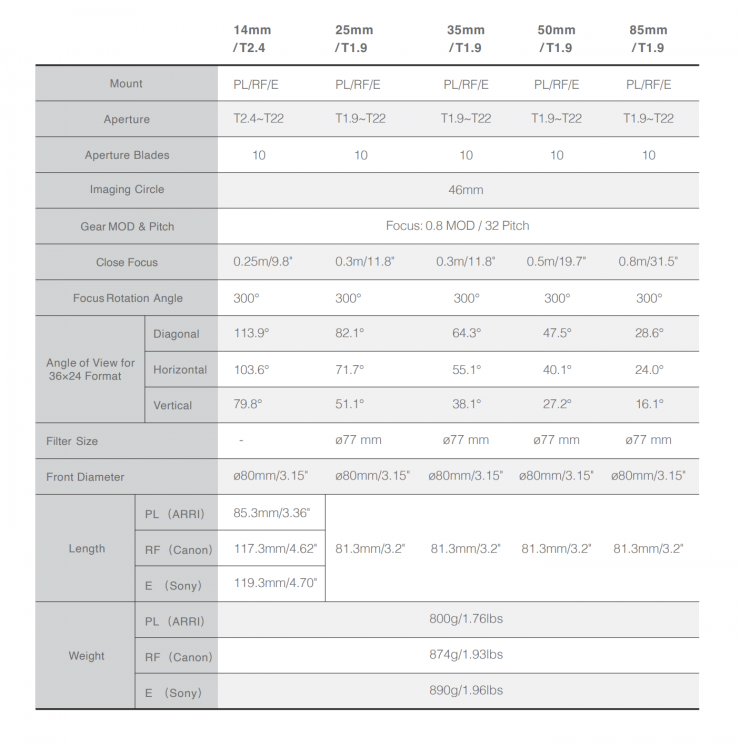
Price & Availability
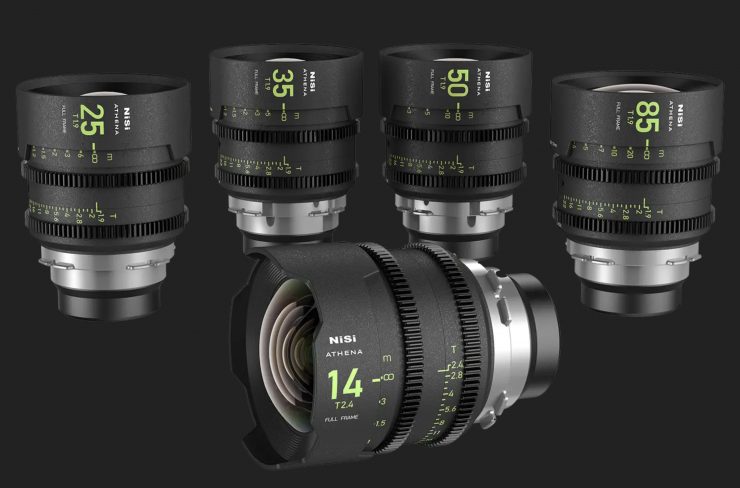
The NiSi ATHENA Primes retail for between $1098-1,198 USD depending on the focal length. This makes them very competitively priced and very affordable for full-frame cine prime lenses.
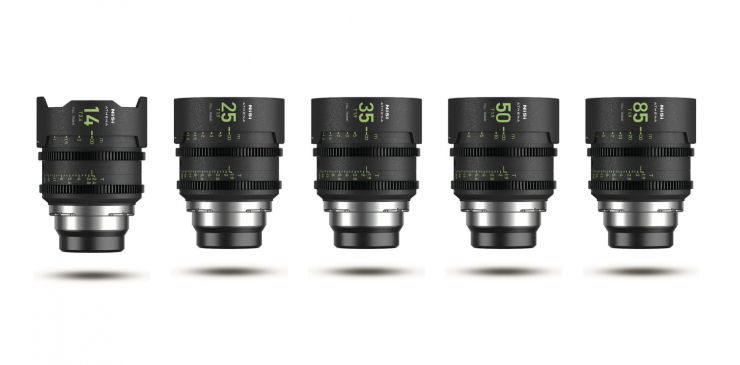
You can also buy the 5-lens set for $5,298 USD.
The case the 5-lens set comes is reasonably decent and there are cut-outs for all of the focal lengths, plus a space for some accessories. My only issue with the design of the case is that the cutouts for the lenses are a little large and the lenses do wobble around a bit. I don’t think this is anything to be overly concerned about but I thought that it was worth mentioning.
Competition
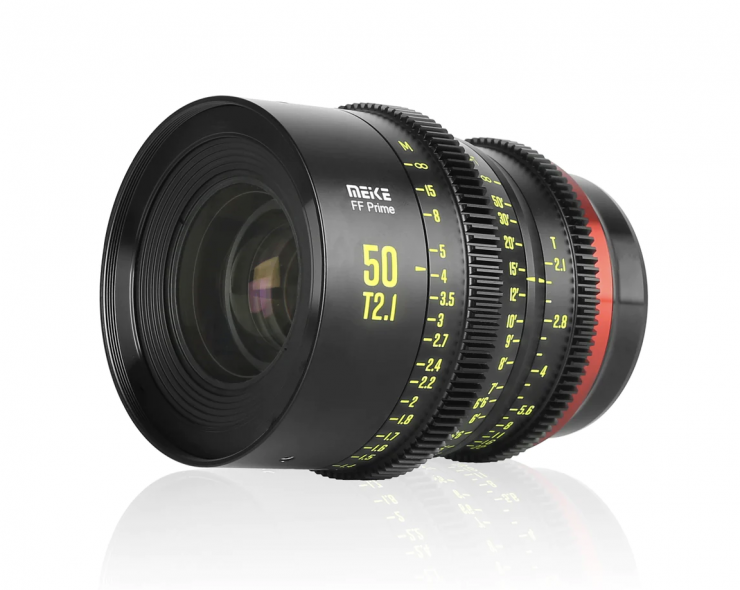
There is quite a bit of competition in this space, and while I won’t list all of the competing options, I will list what I consider to be the main ones:
Meike FF Prime Cine Primes
| PRICE | ||
| Meike FF Prime Cine 16mm T2.5 | $1,199 USD | |
| Meike FF Prime Cine 24mm T2.1 | $1,199 USD | |
| Meike FF Prime Cine 35mm T2.1 | $998 USD | |
| Meike FF Prime Cine 50mm T2.1 | $998 USD | |
| Meike FF Prime Cine 85mm T2.1 | $998 USD |
Meike also sells a 6-lens kit for $6,329 USD.
DZOFilm VESPID
| PRICE | ||
| DZOFilm VESPID 16mm T2.8 | $1,799 USD | |
| DZOFilm VESPID 25mm T2.1 | $1,399 USD | |
| DZOFilm VESPID 35mm T2.1 | $1,399 USD | |
| DZOFilm VESPID 50mm T2.1 | $1,399 USD | |
| DZOFilm VESPID 75mm T2.1 | $1,399 USD |
DZOFilm also sells quite a few VESPID prime kits such as the DZOFilm VESPID 6-Lens Kit A (PL & EF Mounts) which retails for $7,499 USD.
Rokinon XEEN CF Pro
| PRICE | ||
| Rokinon XEEN CF 16mm T2.6 | $1,895 USD | |
| Rokinon XEEN CF 24mm T1.5 | $1,995 USD | |
| Rokinon XEEN CF 35mm T1.5 | $1,995USD | |
| Rokinon XEEN CF 50mm T1.5 | $1,995 USD | |
| Rokinon XEEN CF 85mm T1.5 | $1,895 USD |
You can also buy the Rokinon XEEN CF Pro 5-Lens PL-Mount Cine Lens Kit for $8,995 USD.
Conclusion
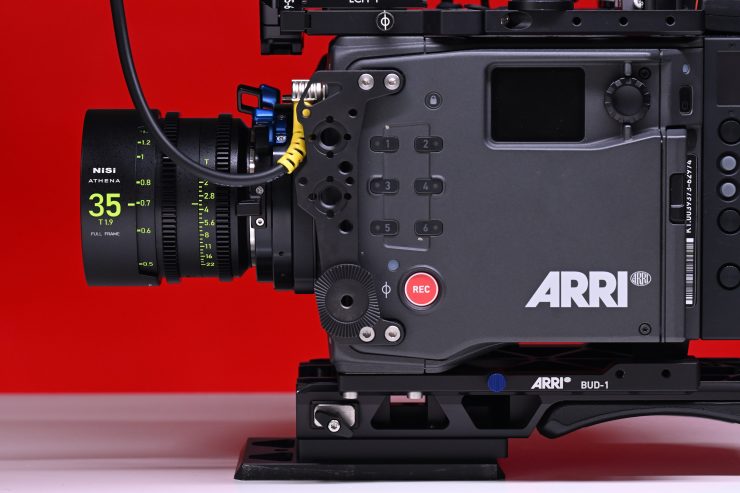
In the last few years, the market has been flooded with affordable cine lenses, and this has been a good thing for the end user because the intense competition has seen prices continue to fall. The downside to this is that deciding what lenses are right for you has become harder and harder given all the options that are available.
While the NiSi ATHENA primes are hardly groundbreaking in terms of coming up with an affordable full frame cine prime lens set, the consistency in terms of build quality, mechanics, and all the lenses having the same weight is something we haven’t arguably seen before. If you have a stigma about affordable Chinese-made cine lenses not being any good, you should think again.
The Athena primes represent excellent value for money and optically, while certainly far from perfect, they can compete with much more expensive lenses in certain areas. In saying that, the Meike FF Cine primes that I have also previously reviewed on the site are no slouches either, however, they have different weights and sizes, and the mechanical and build quality consistency, at least in my opinion, isn’t as good as the NiSi ATHENAs.
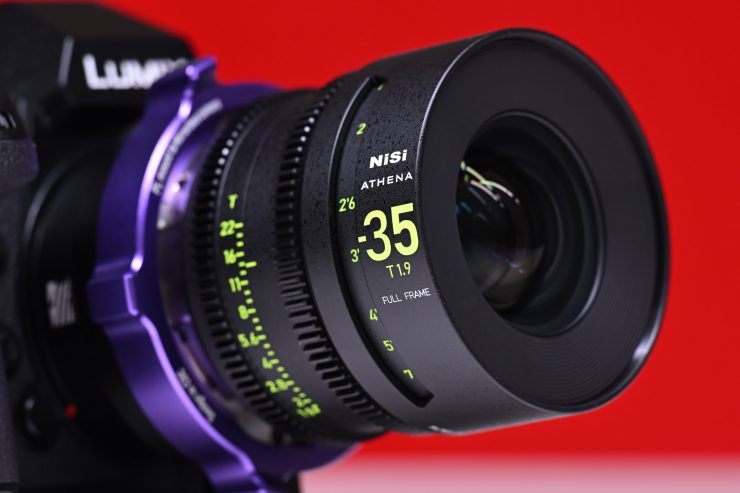
I really need to reiterate that there are no shortcuts with optics and you generally pay for what you get. The NiSi ATHENA primes can certainly compete with more expensive lenses when it comes to center sharpness, but the edge sharpness isn’t great and flare varies between the focal lengths. The CA is an issue when using the 35mm wide open. Look, to be honest, no one should expect $1,000 USD cine primes to have the same level of performance as much bigger, heavier, and more expensive lenses.
One of the biggest caveats with the design of the PL mount versions of the lenses is because the rear mounts extend you can’t use them (except the 25mm) with PL mount adapters that utilize drop-in filters. This is something NiSi should have been very upfront about when selling the lenses.
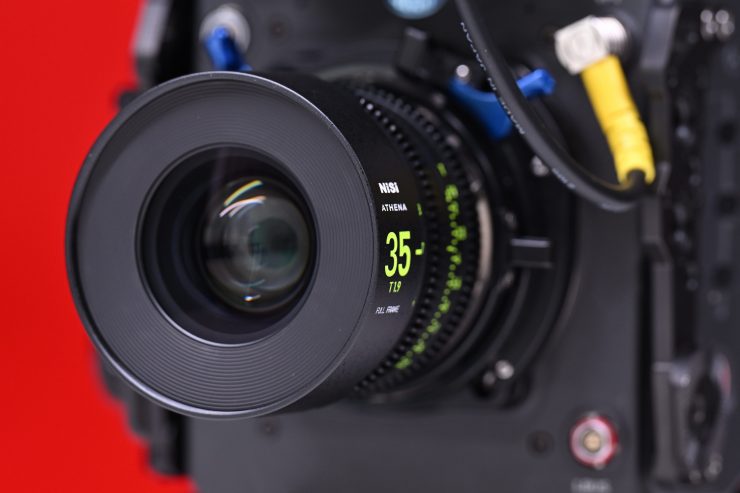
The ATHENA primes are optically pretty sound and they are solidly made and feature good mechanics and consistency across the focal lengths. If you are looking for an affordable set of lightweight full-frame cine primes then they are very hard to beat, as long as you are aware of some of the caveats when using them.

